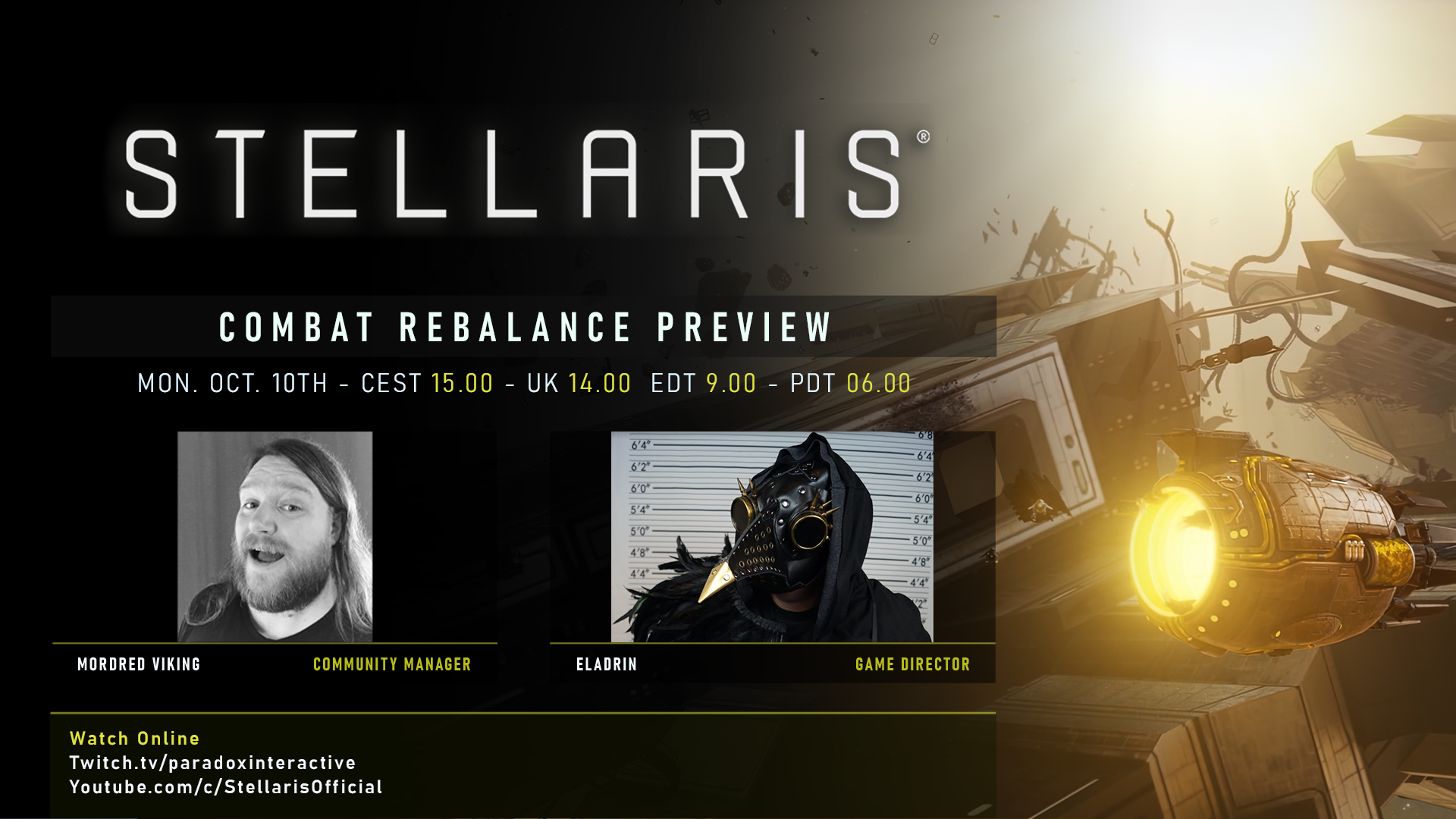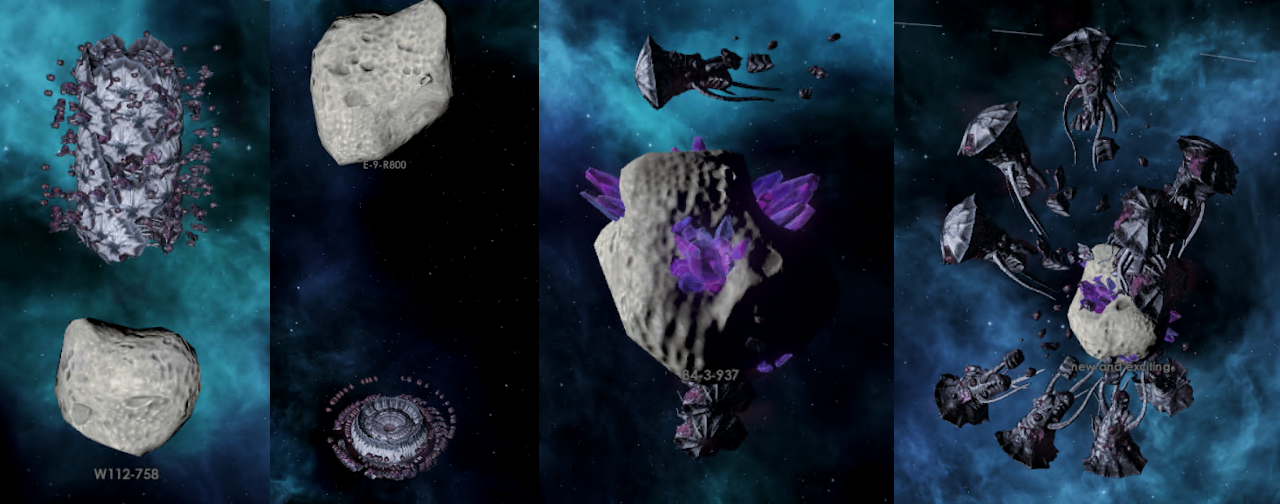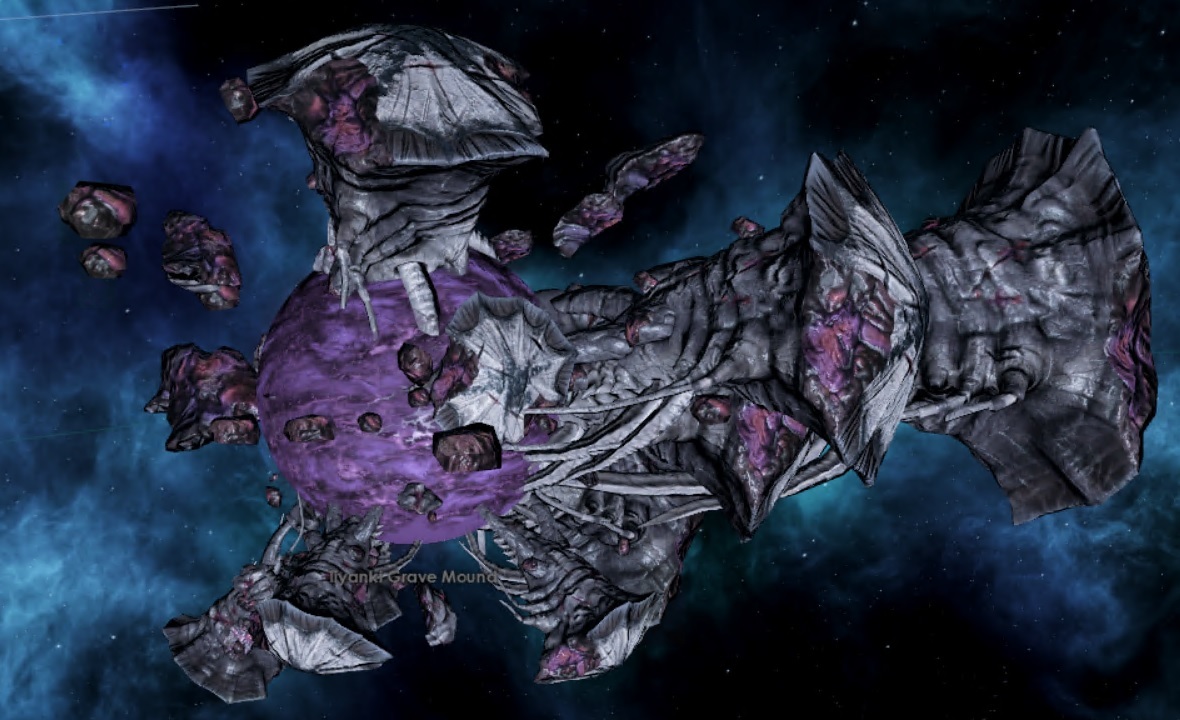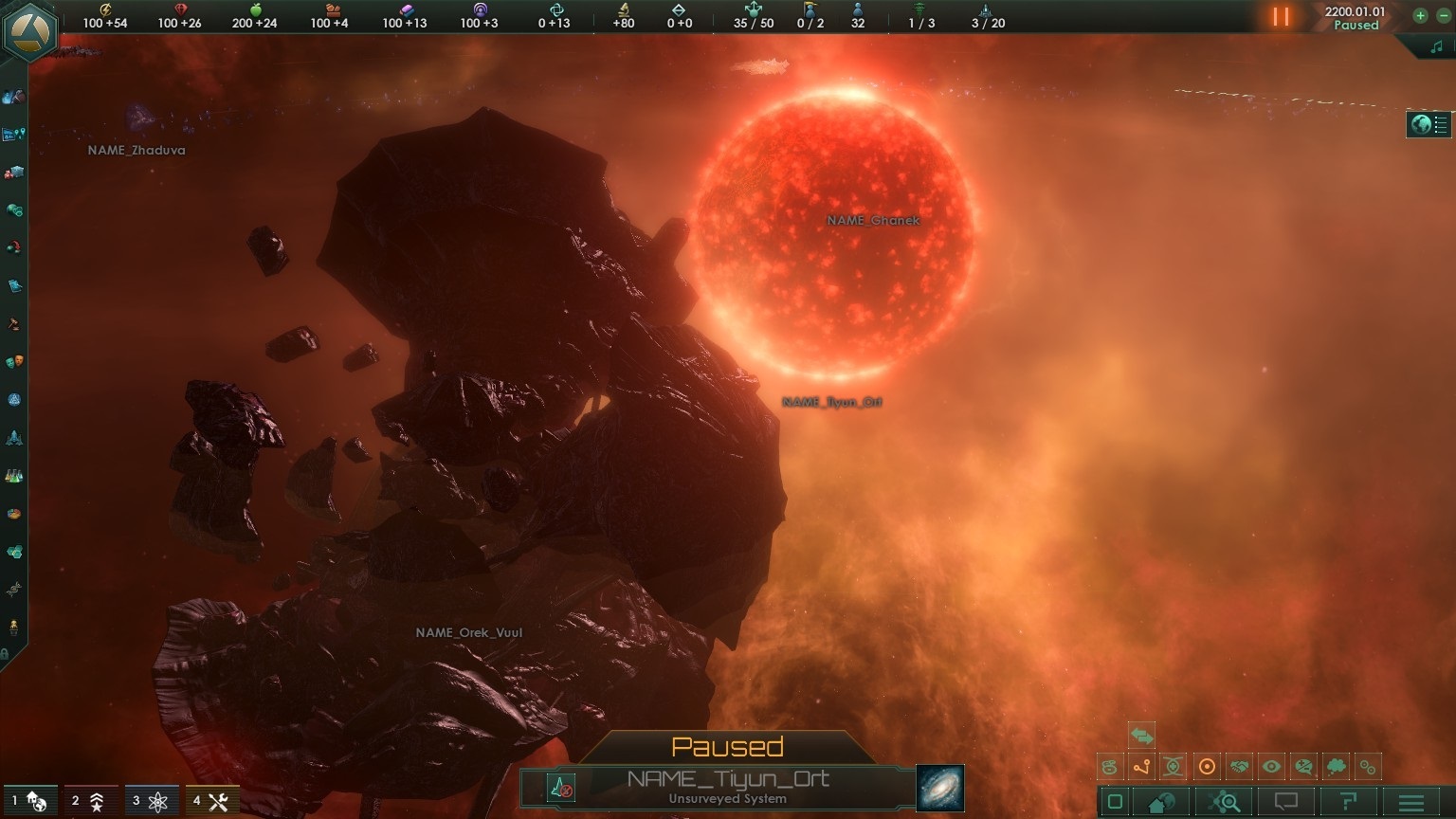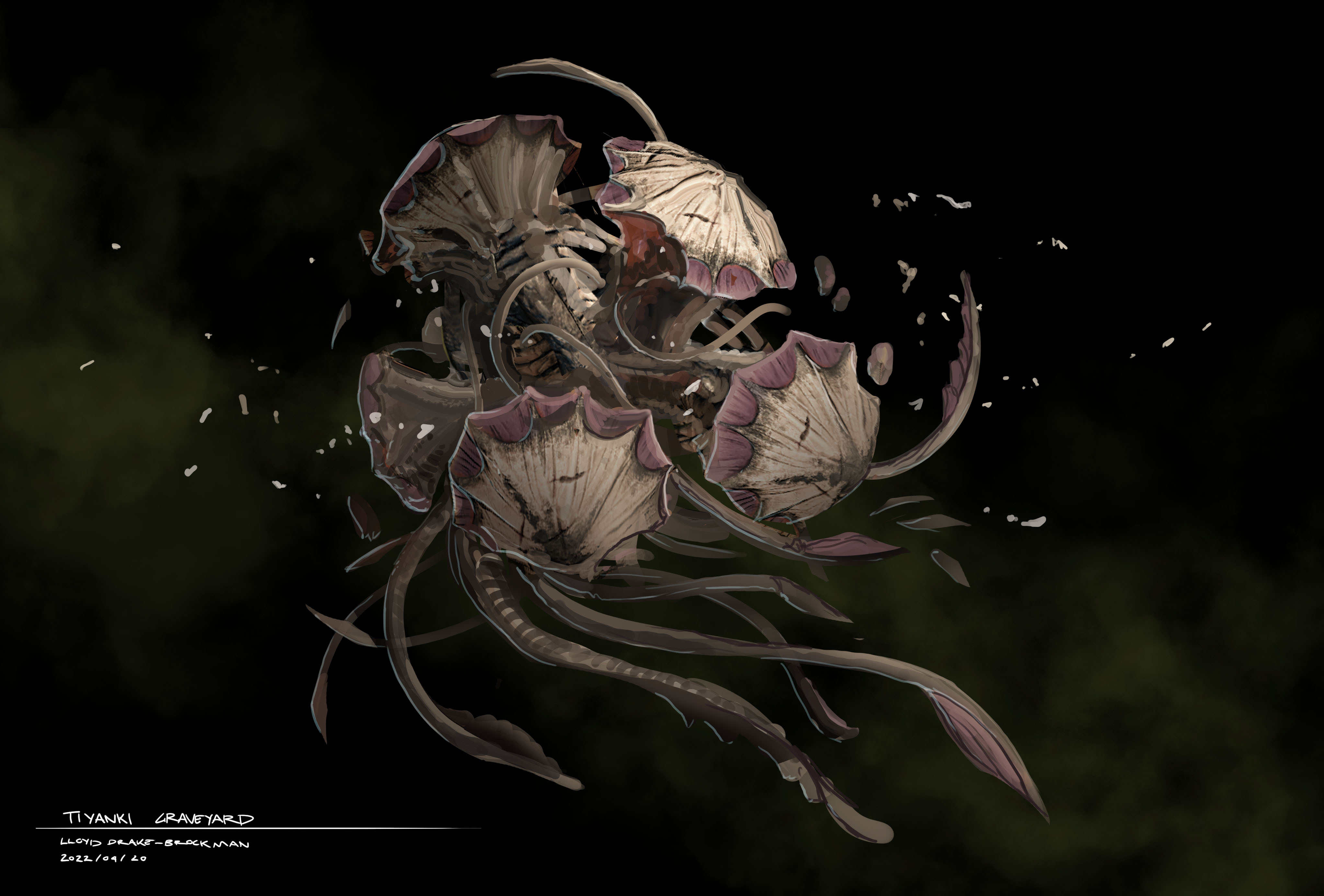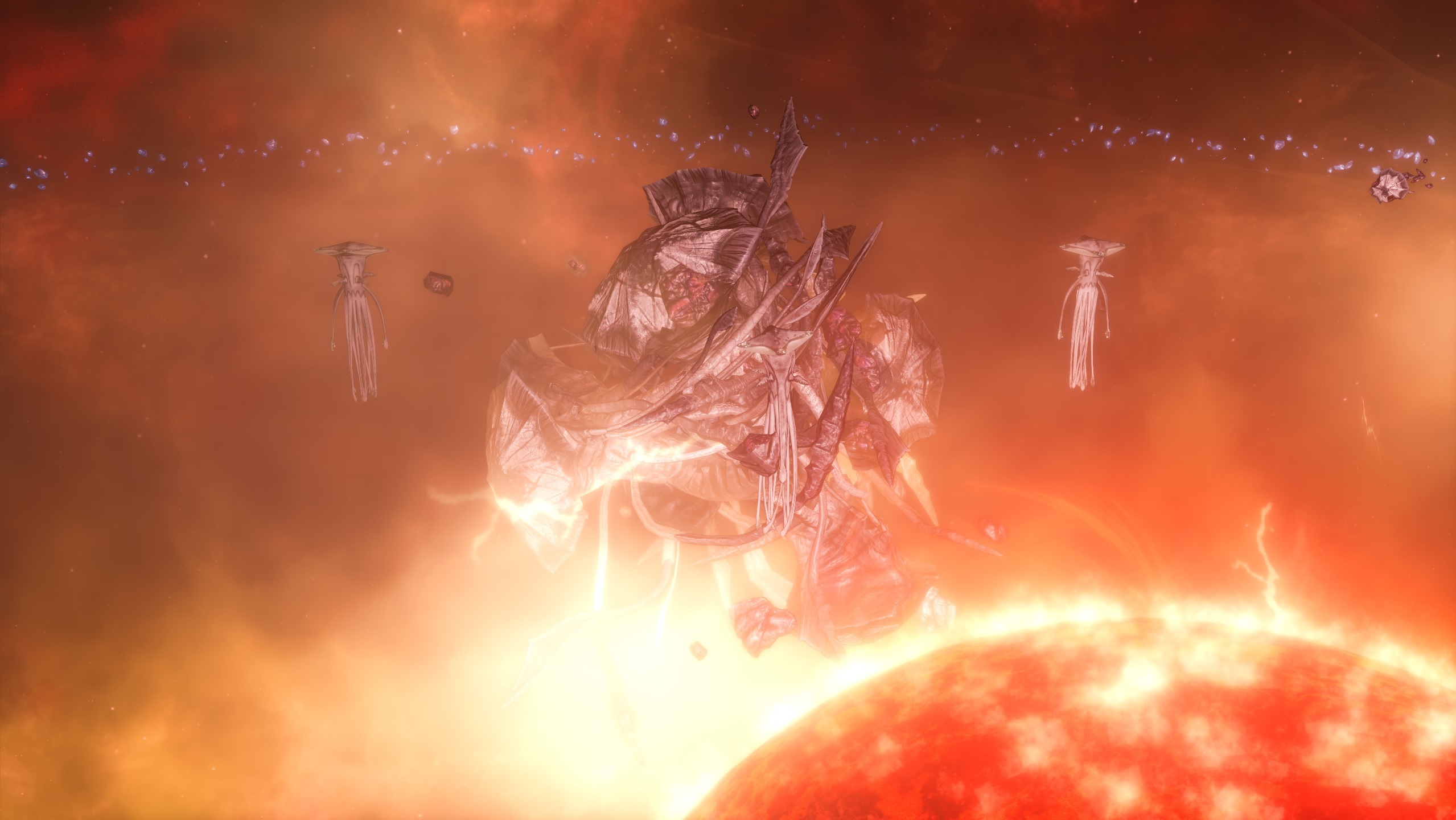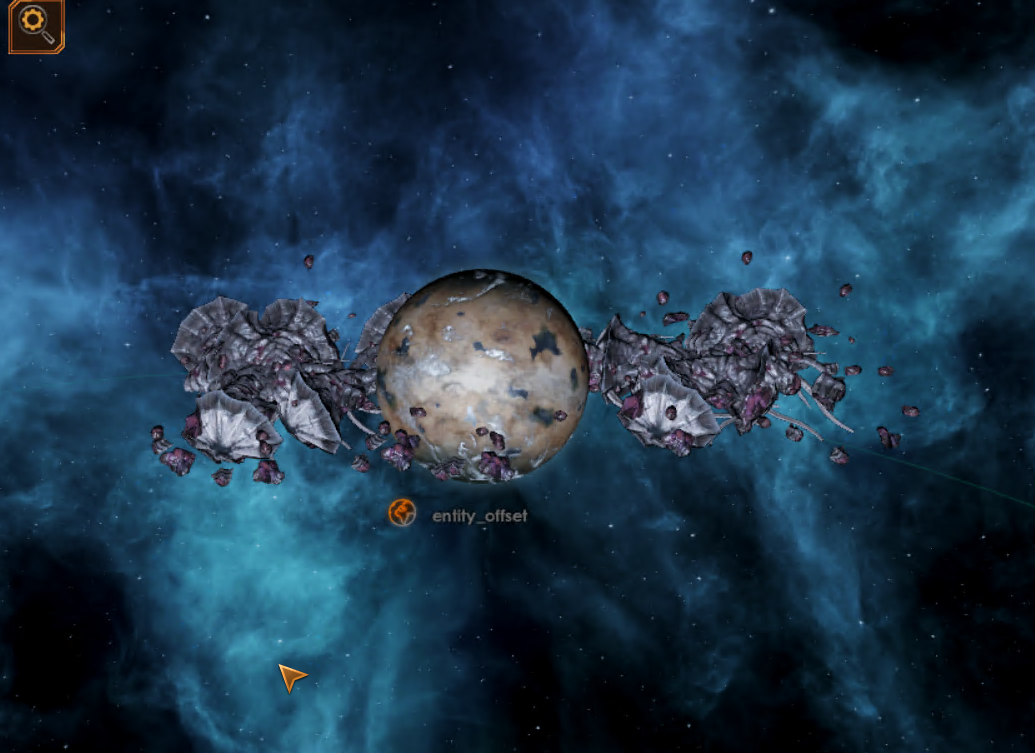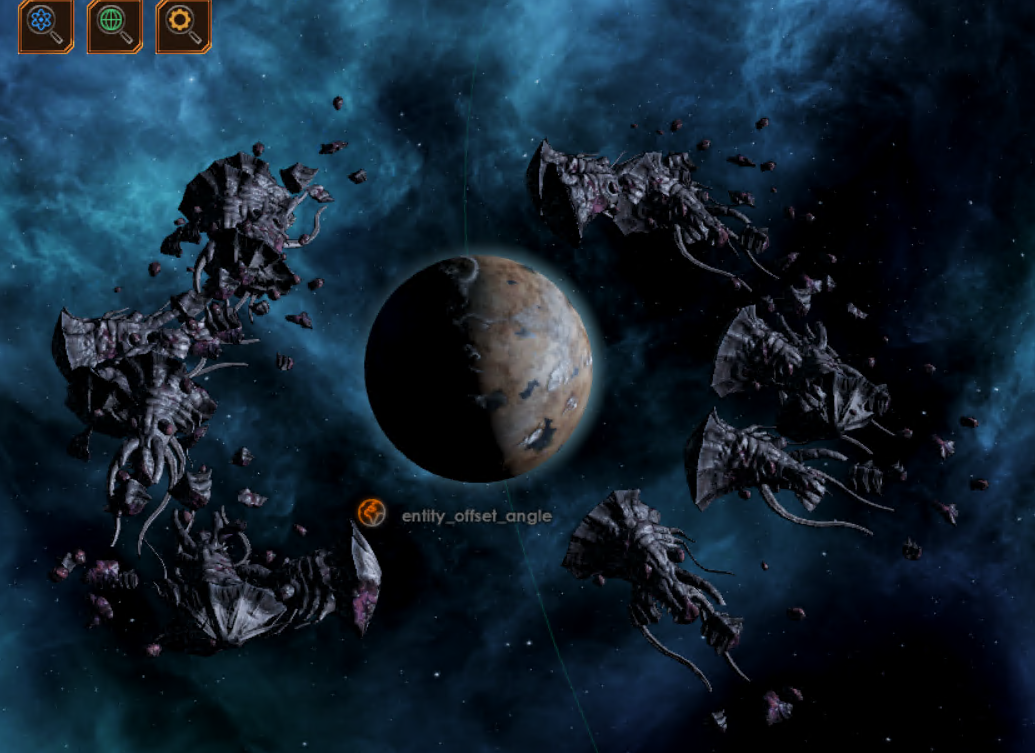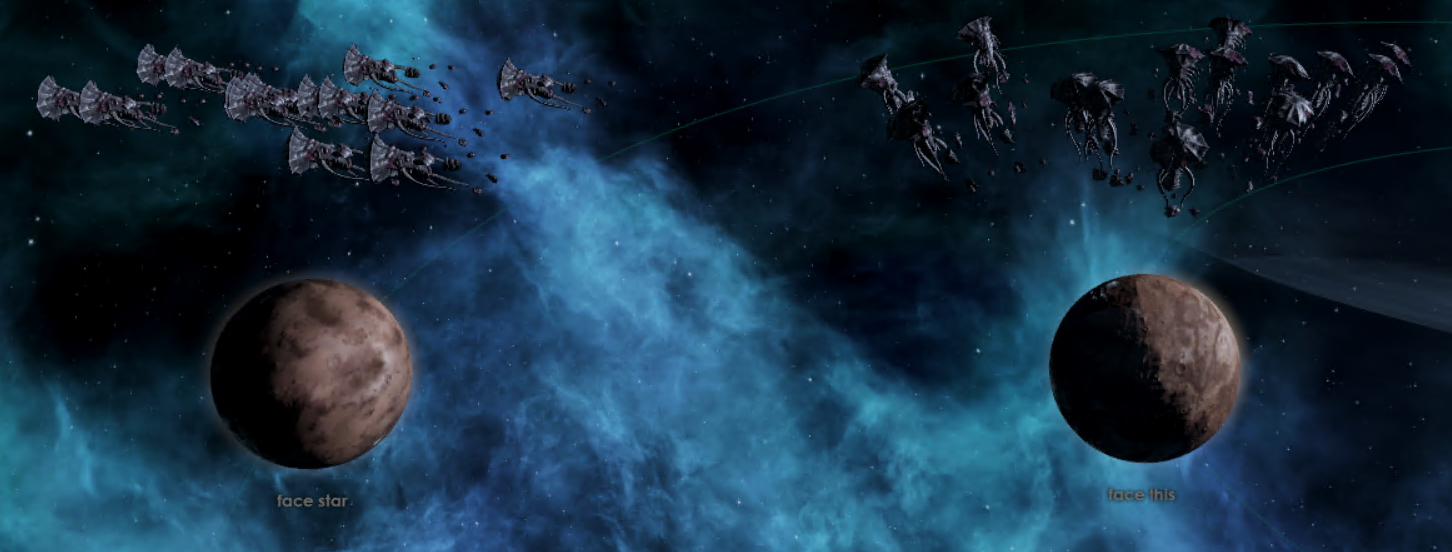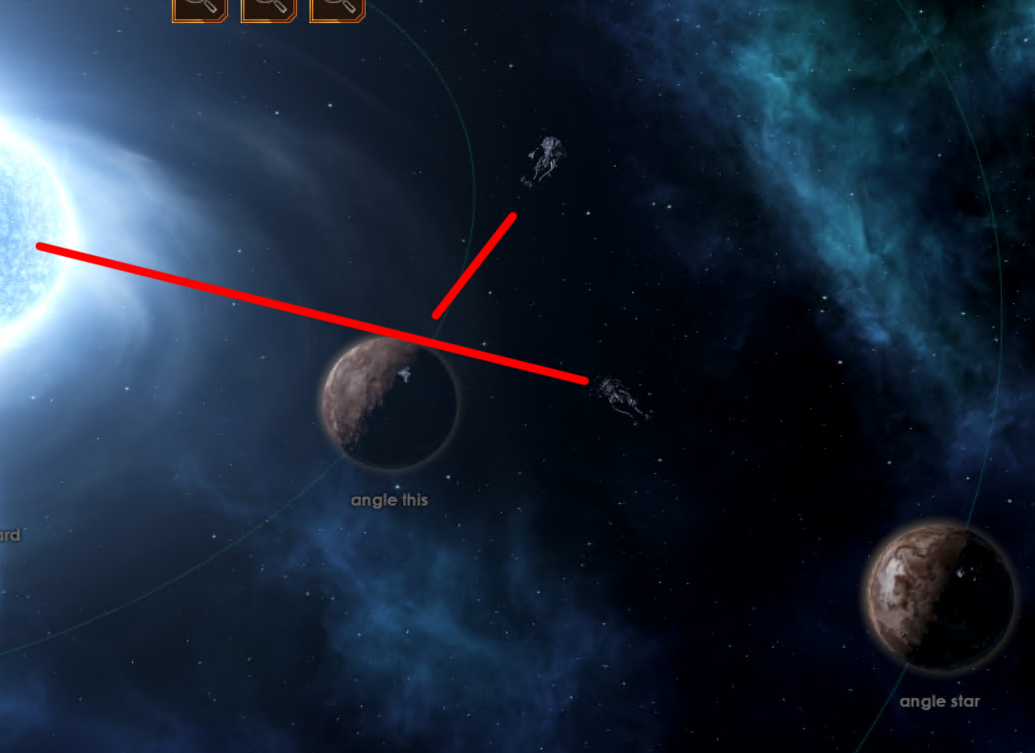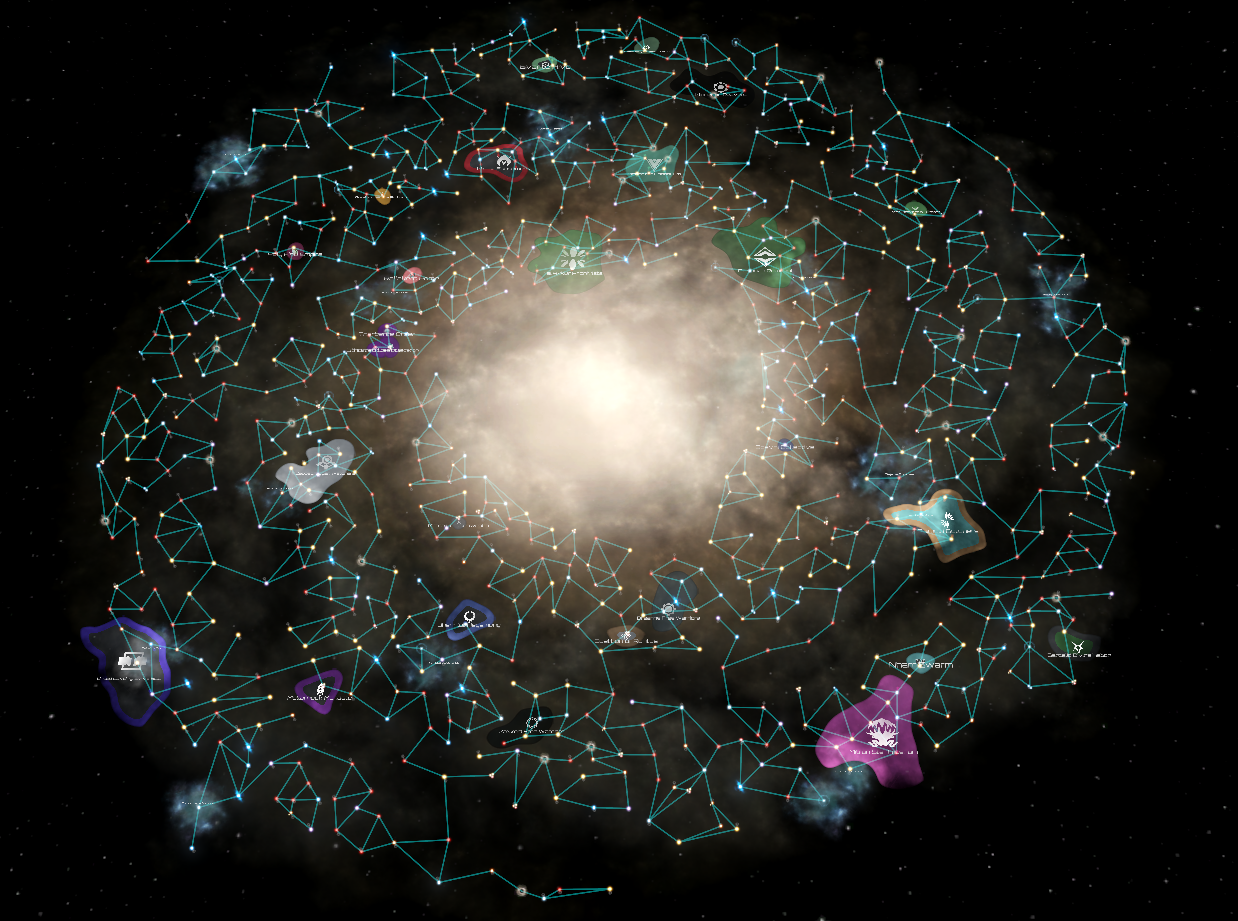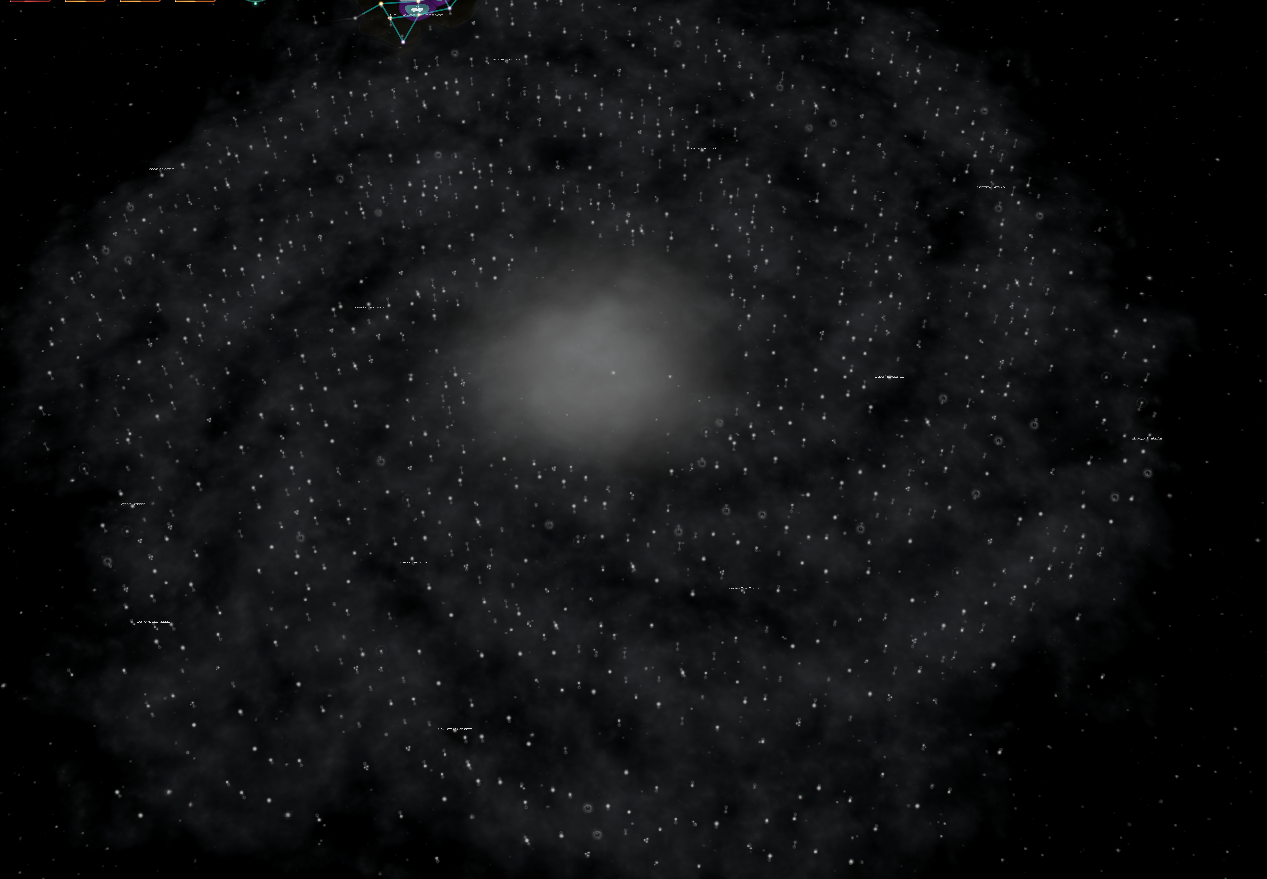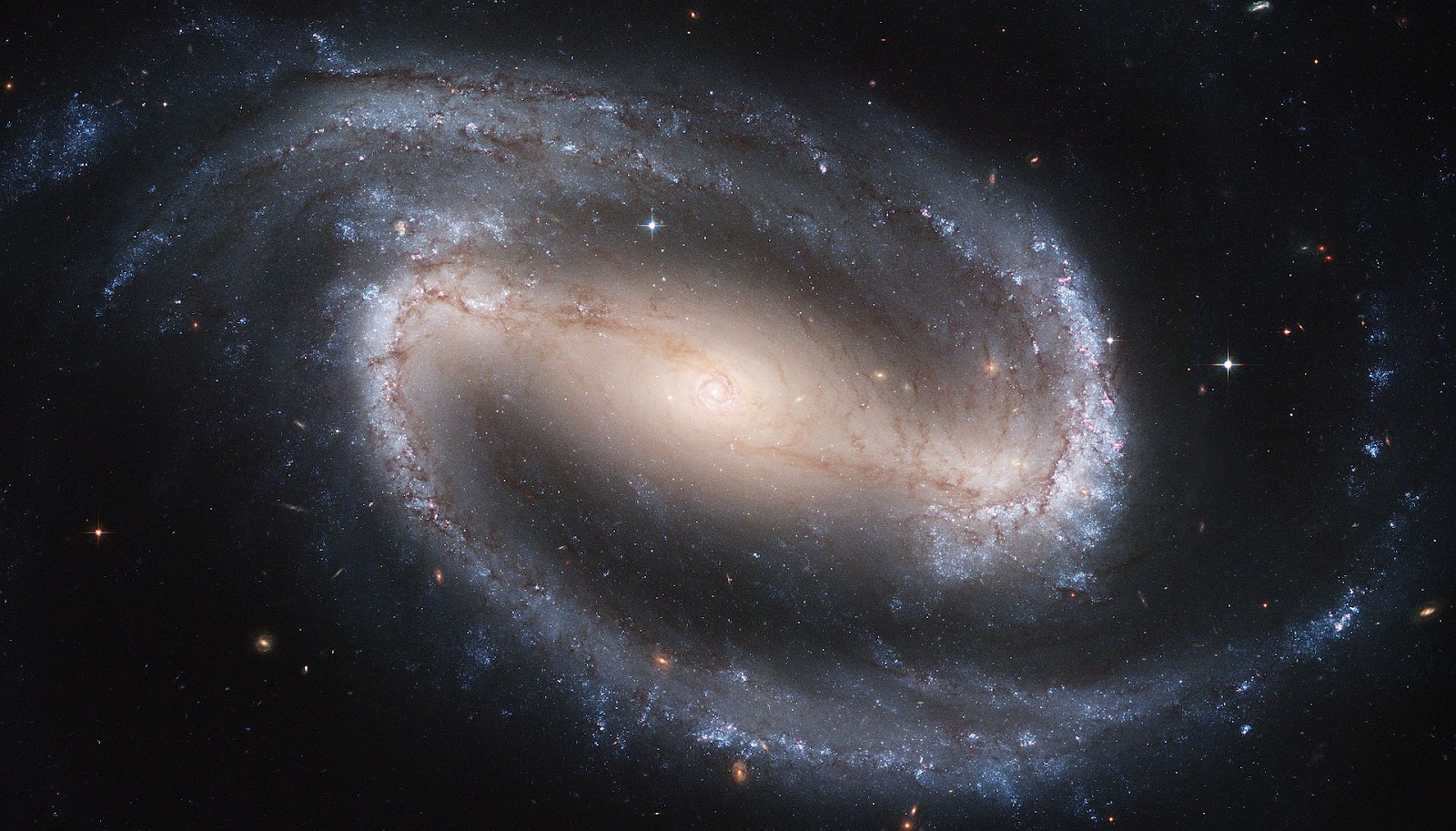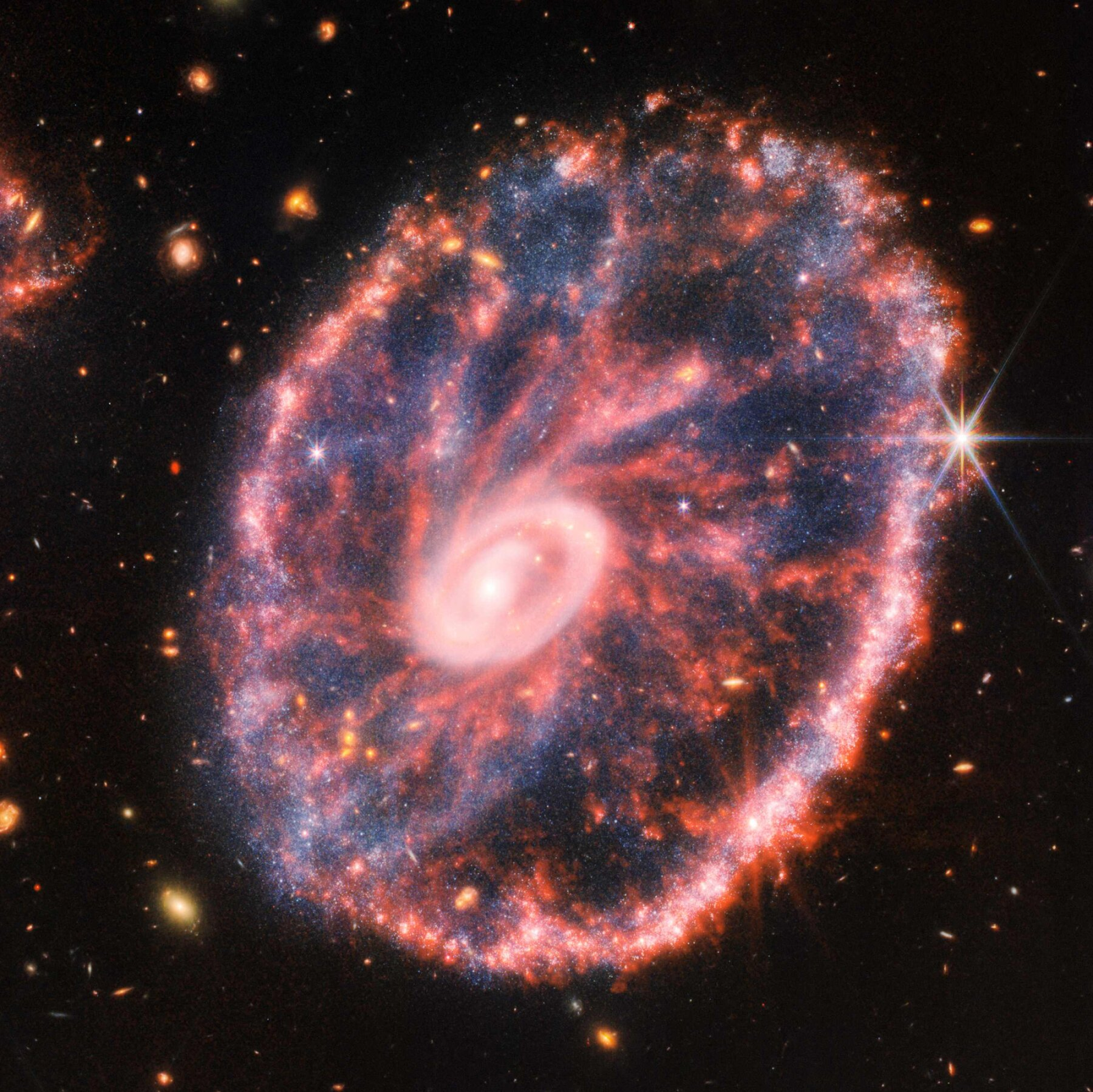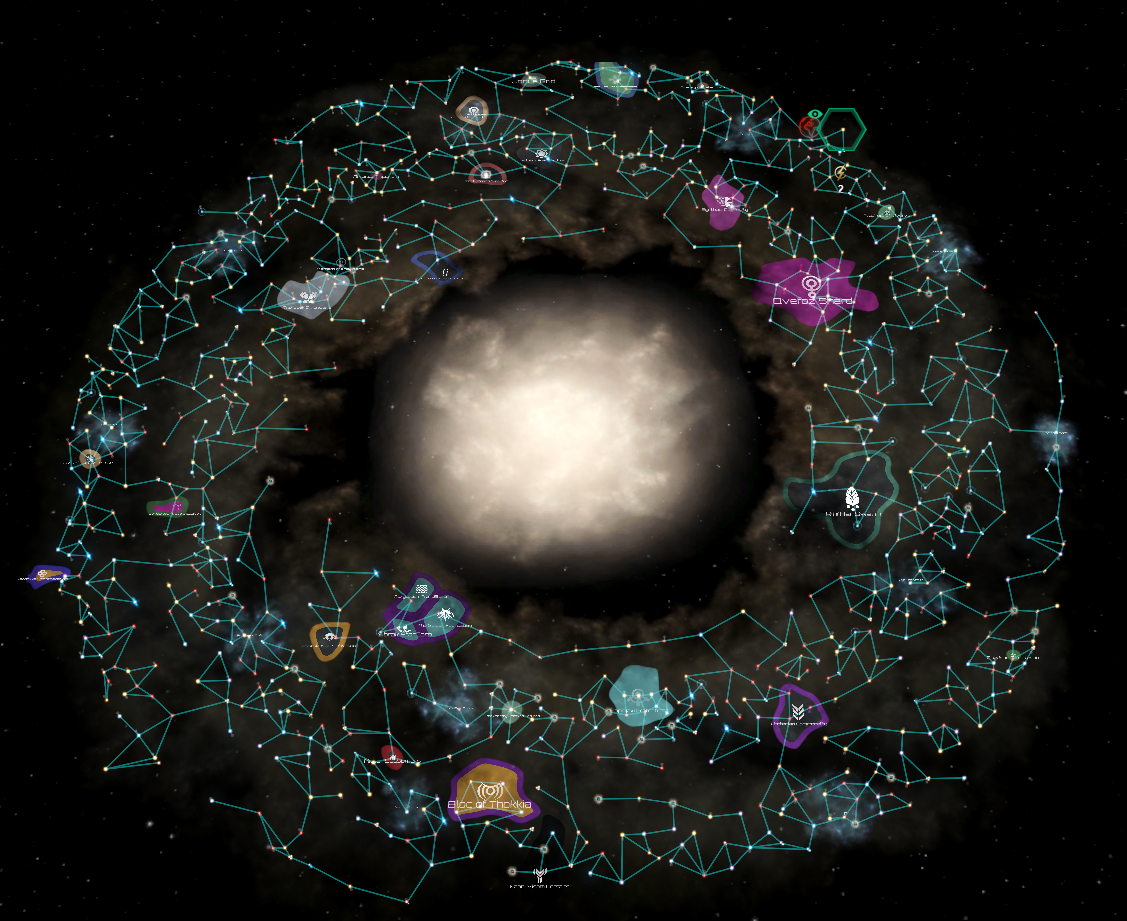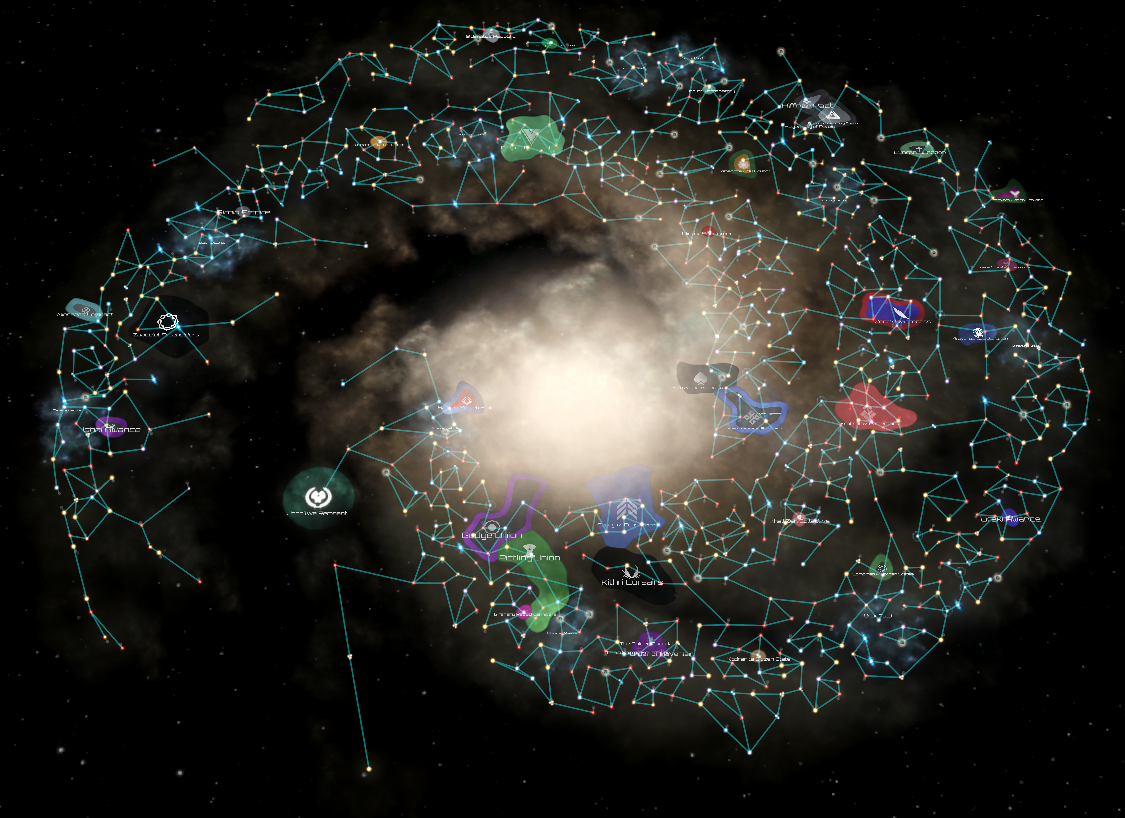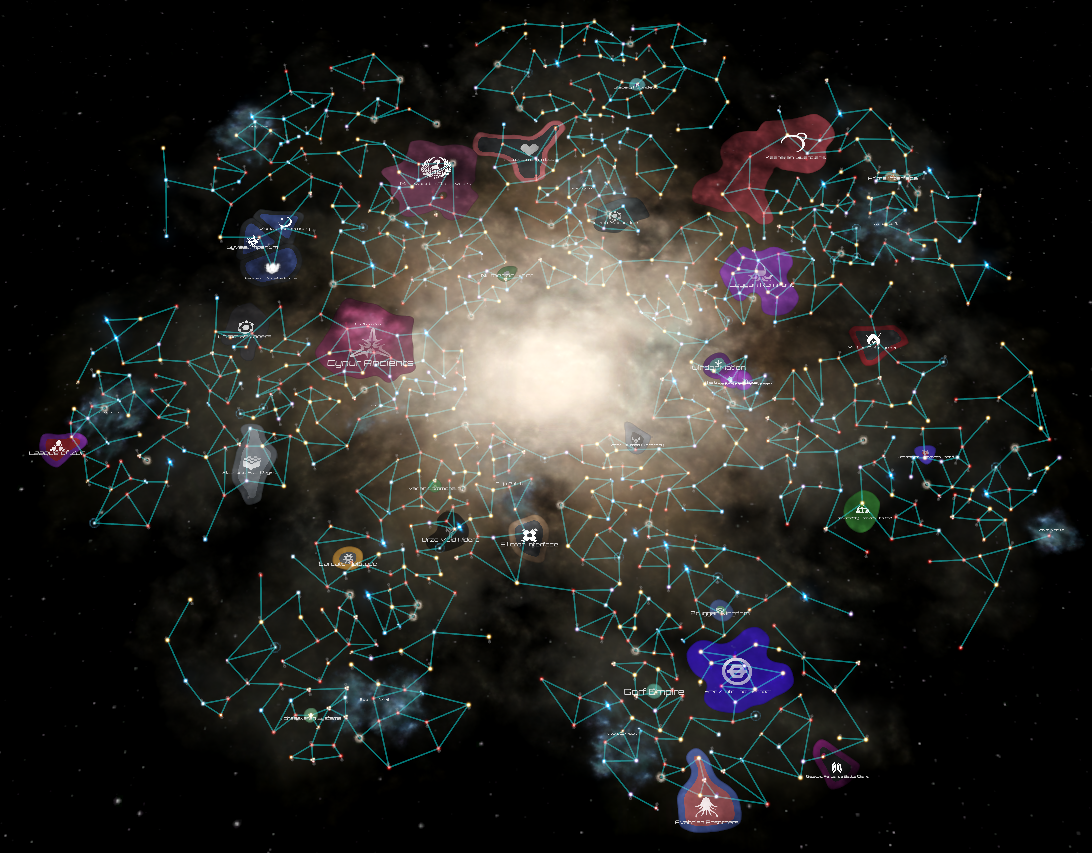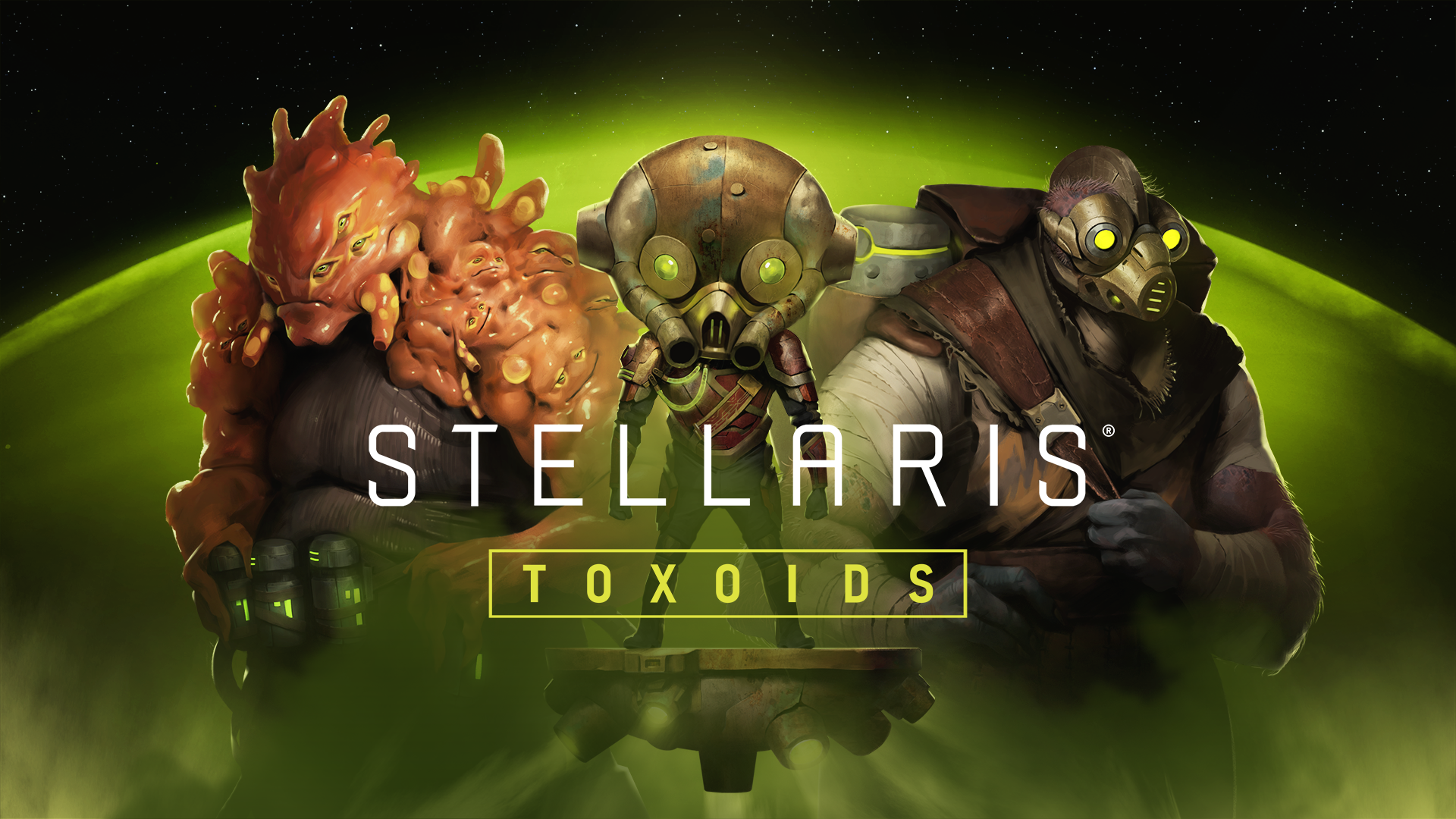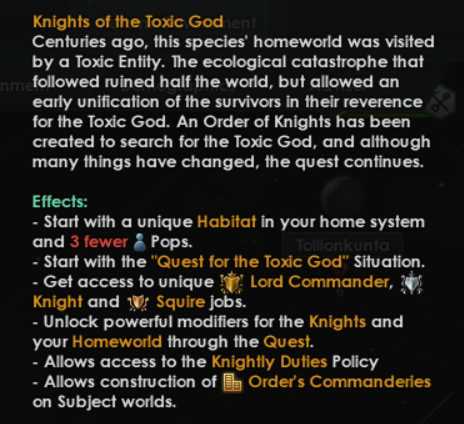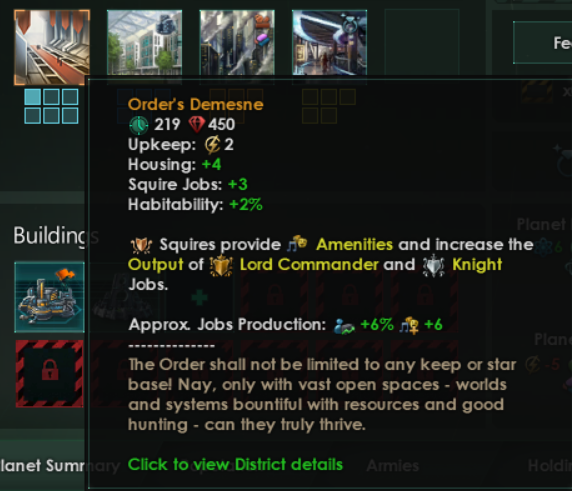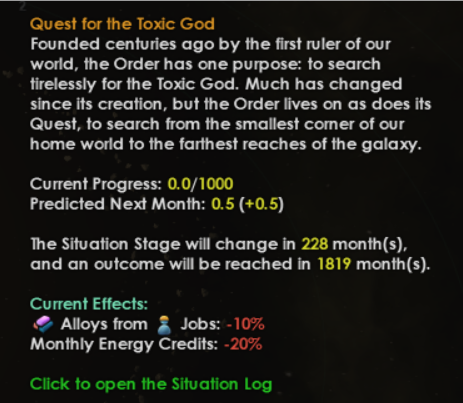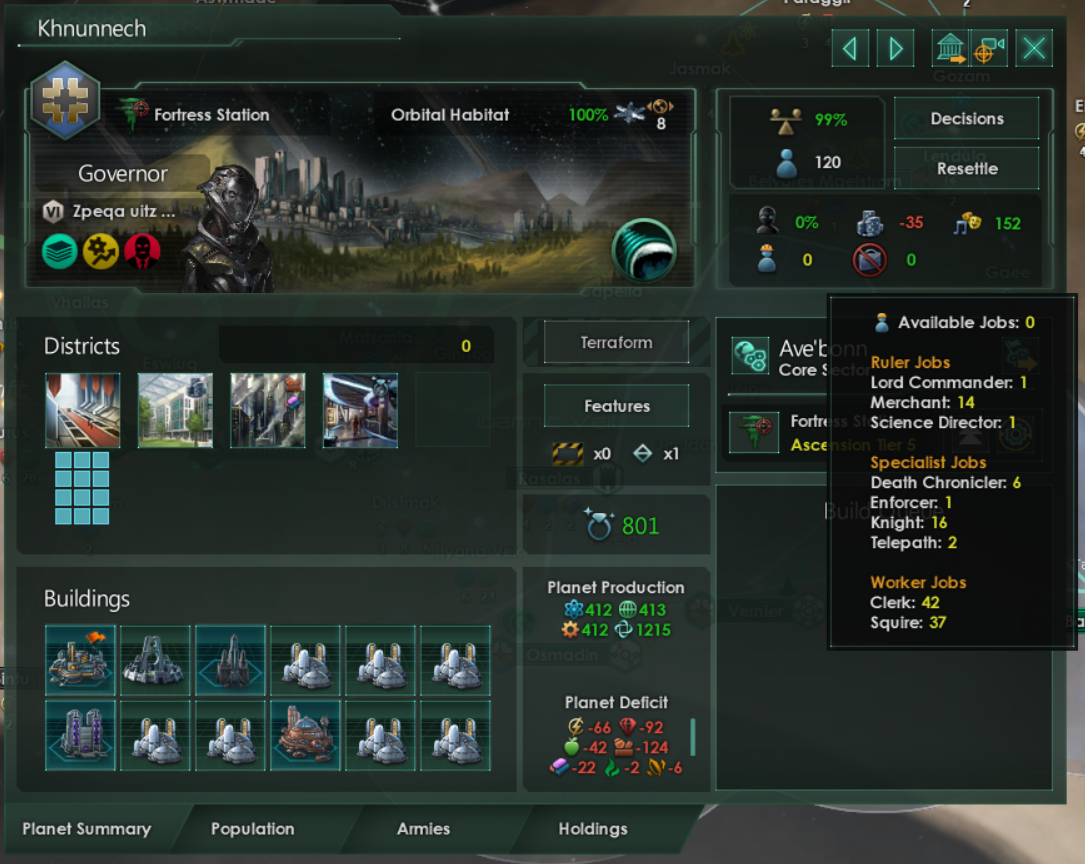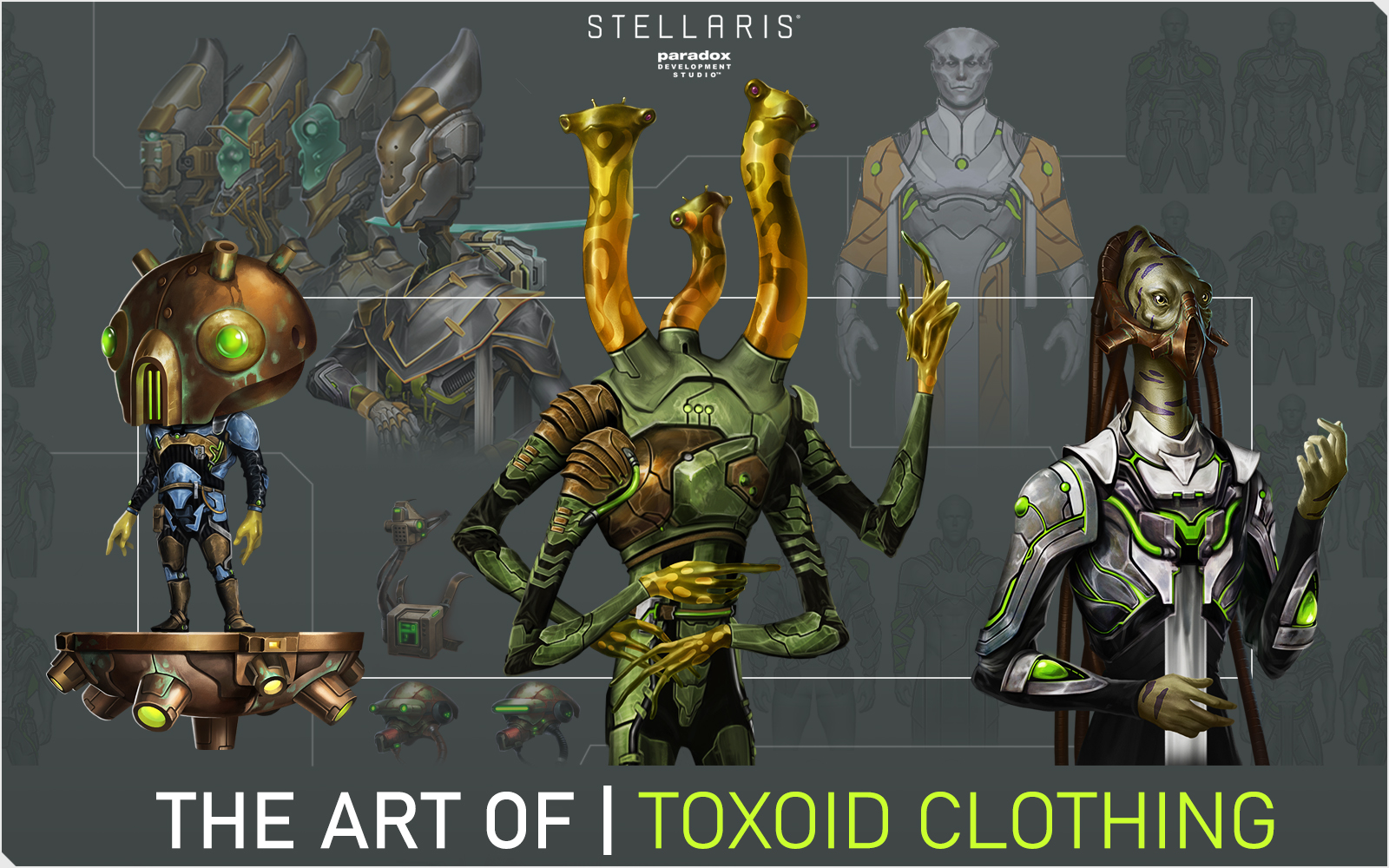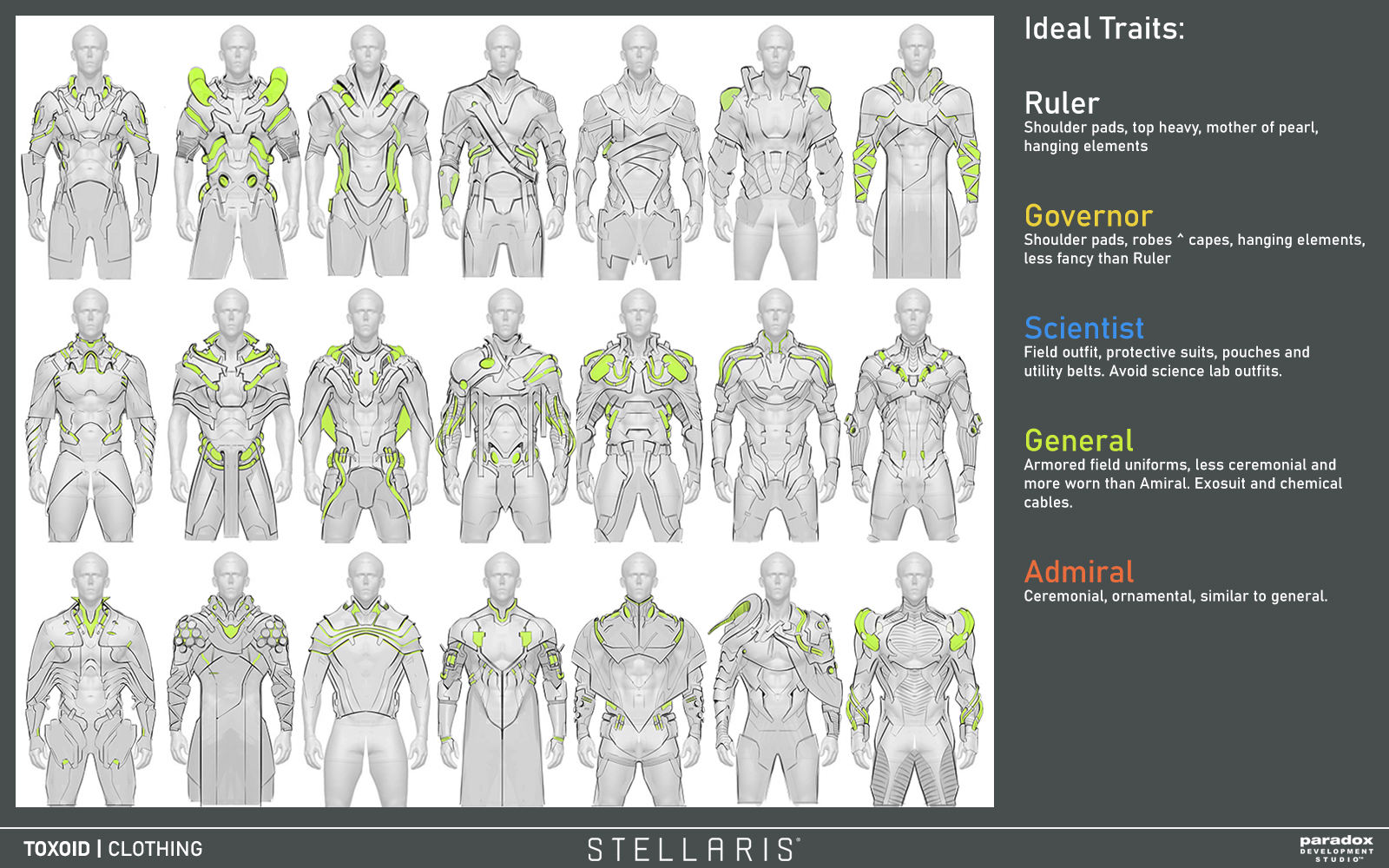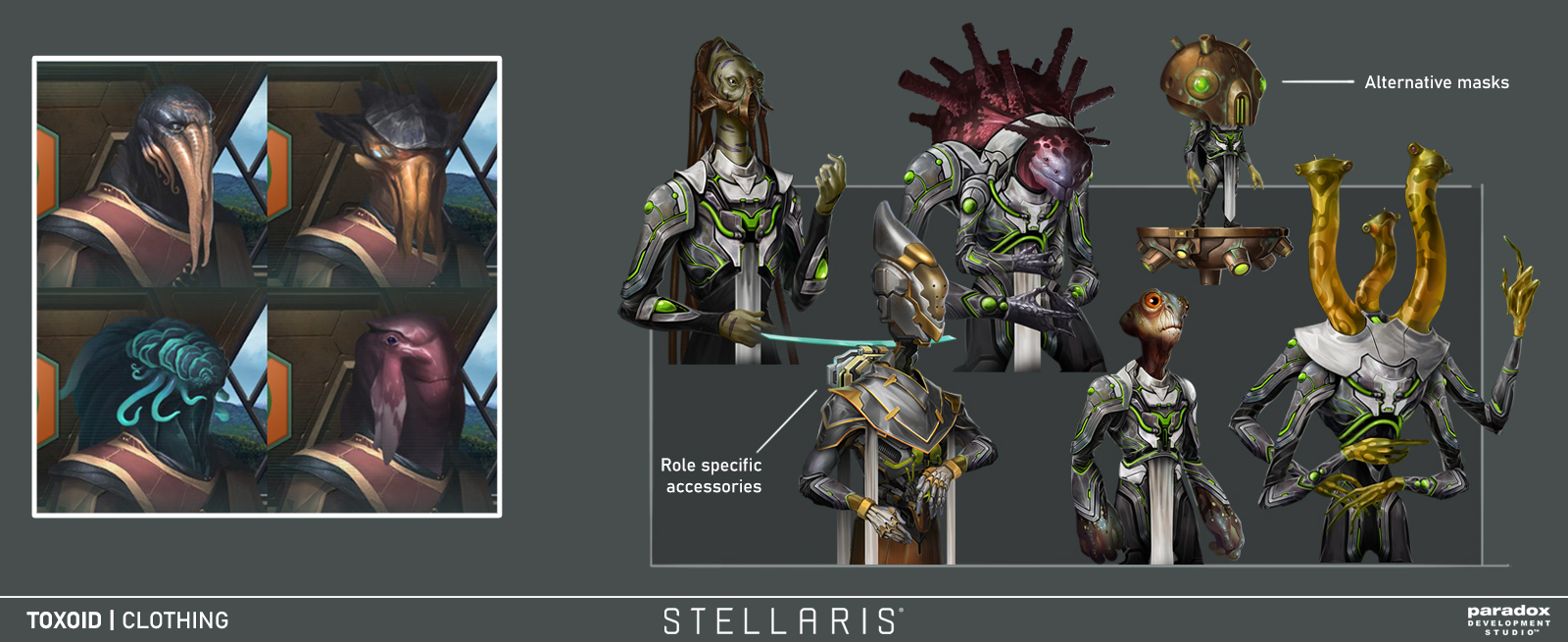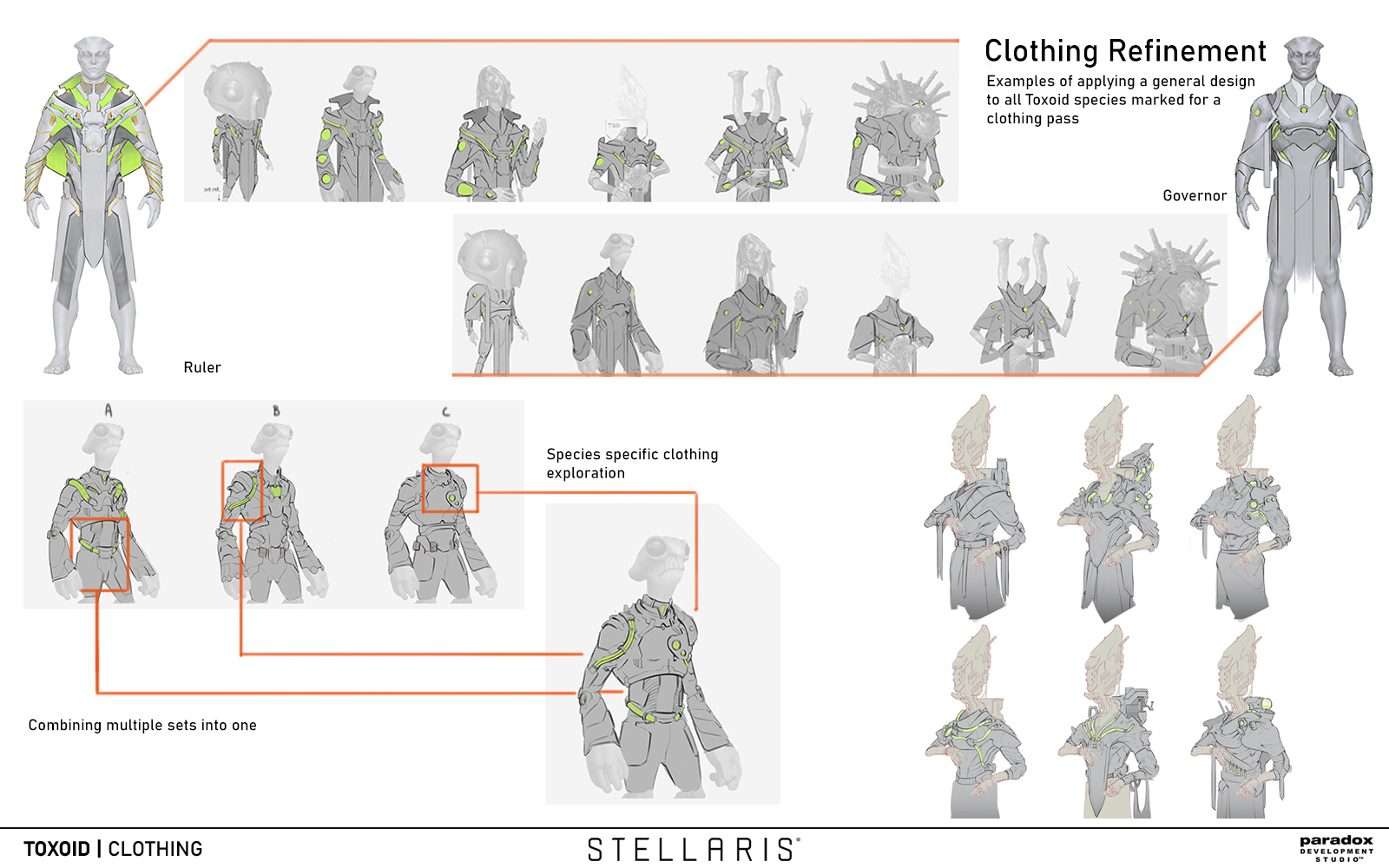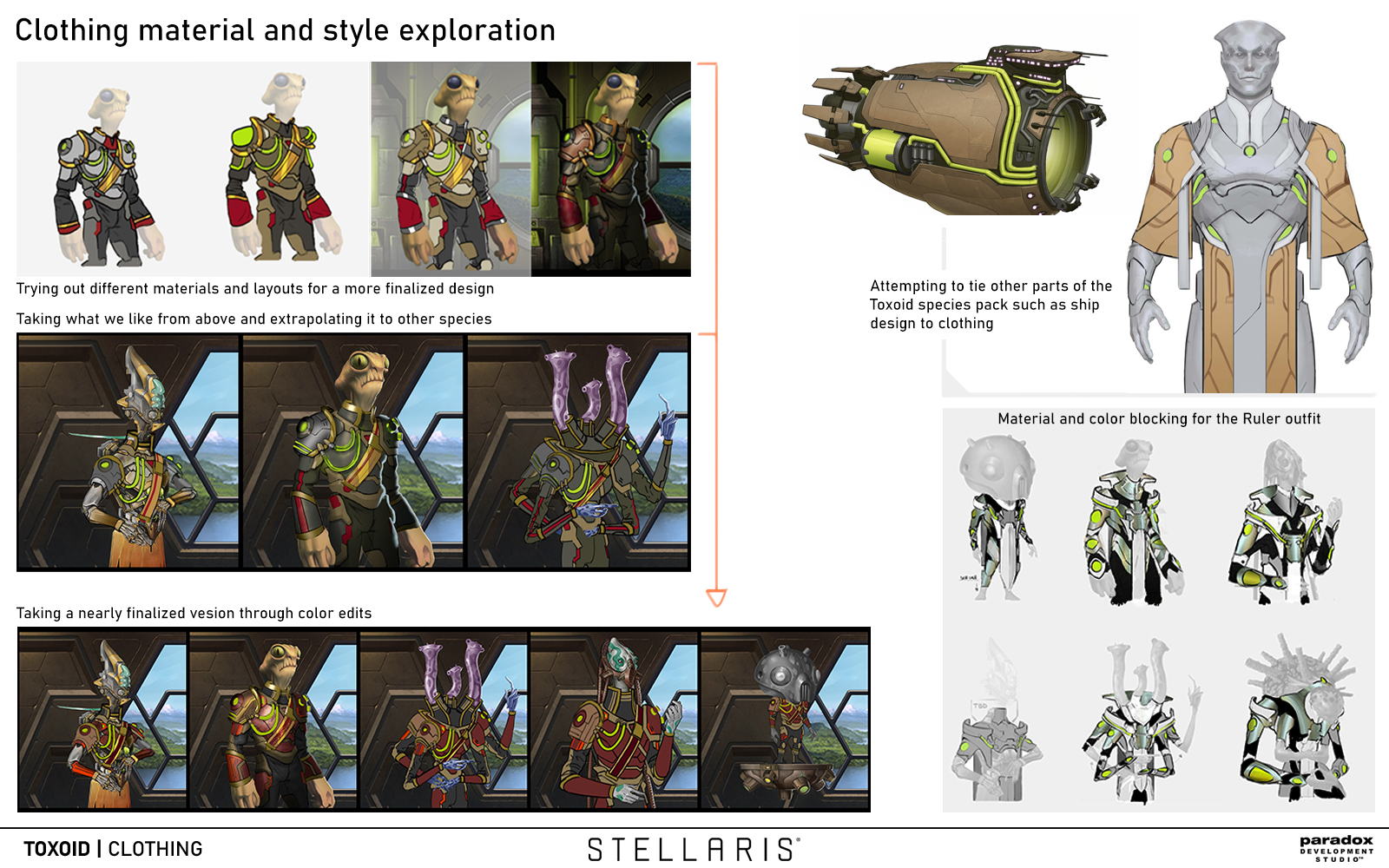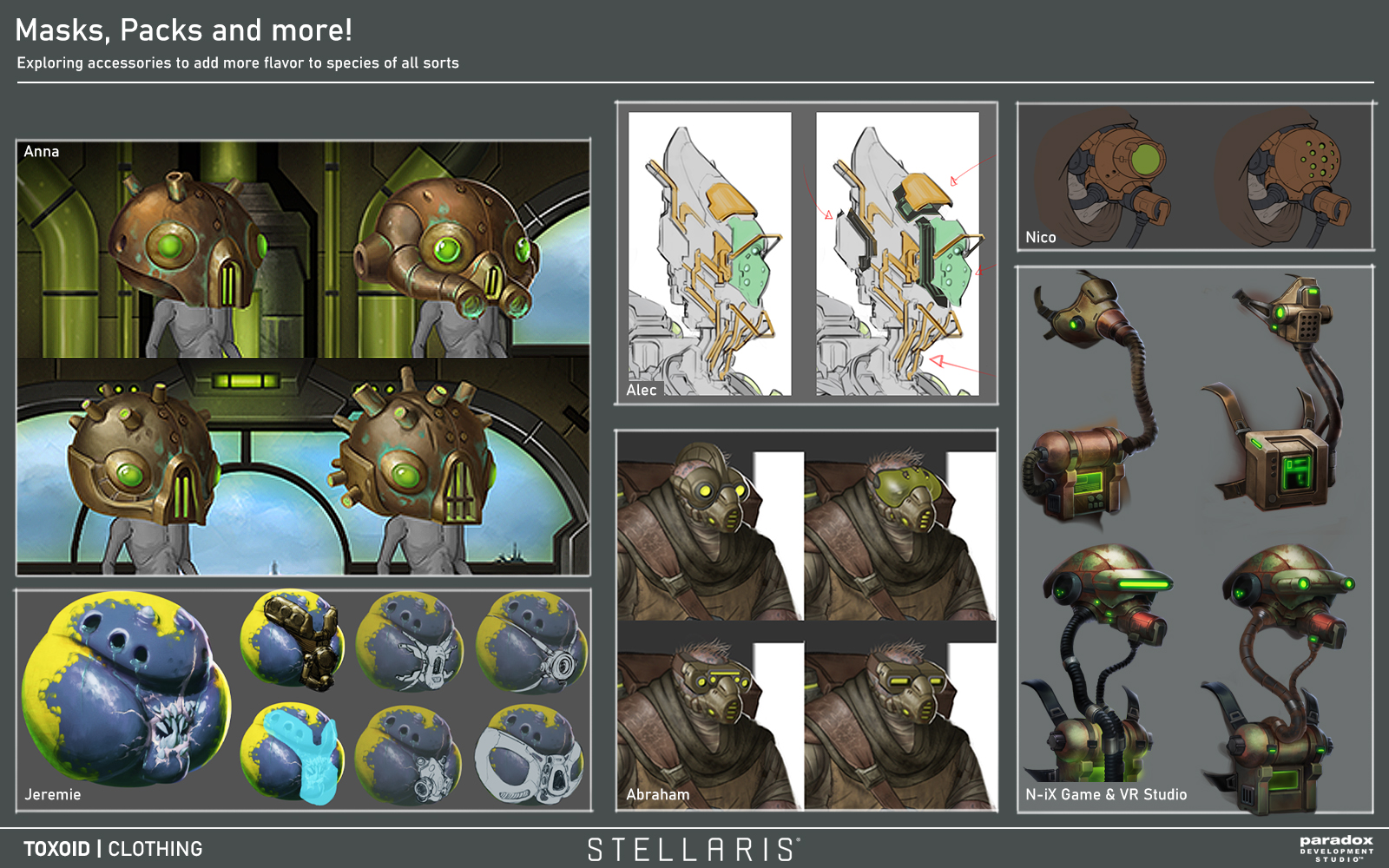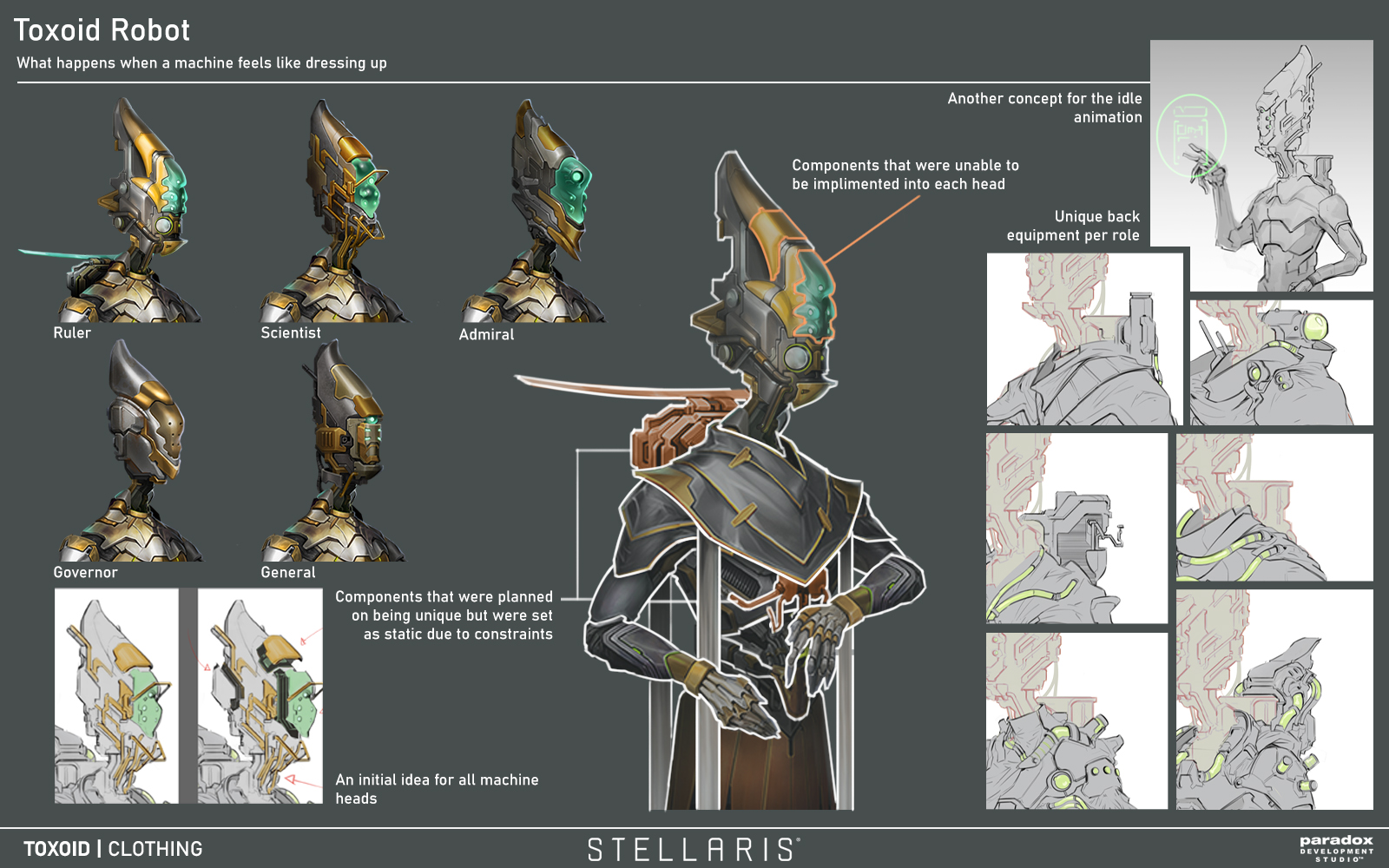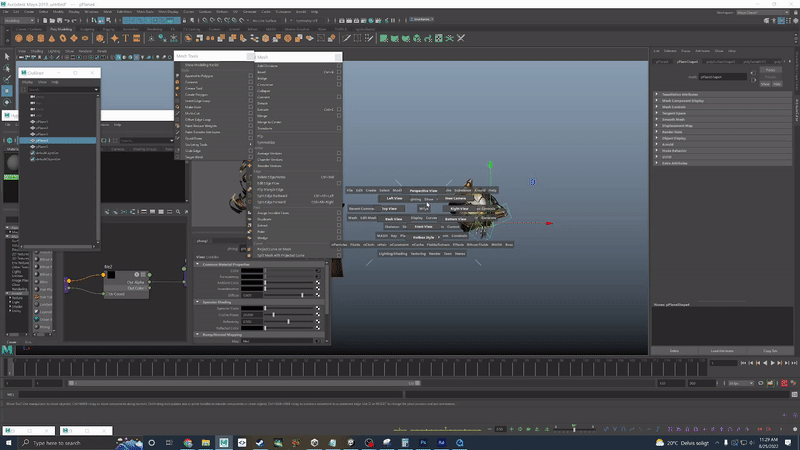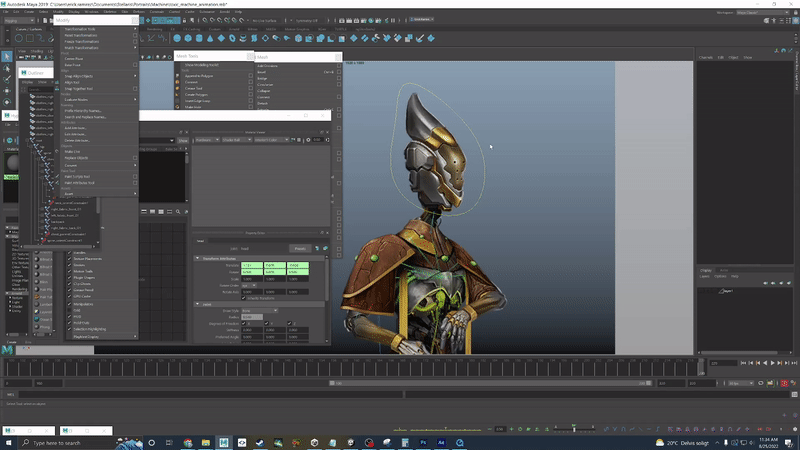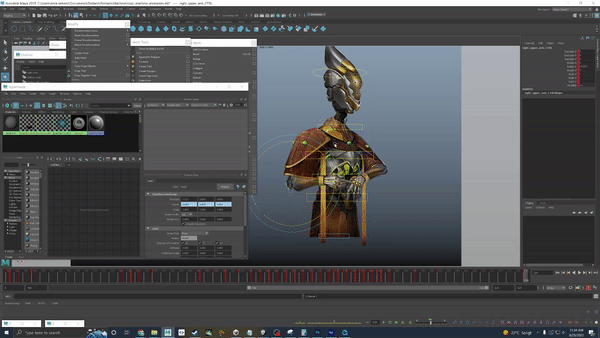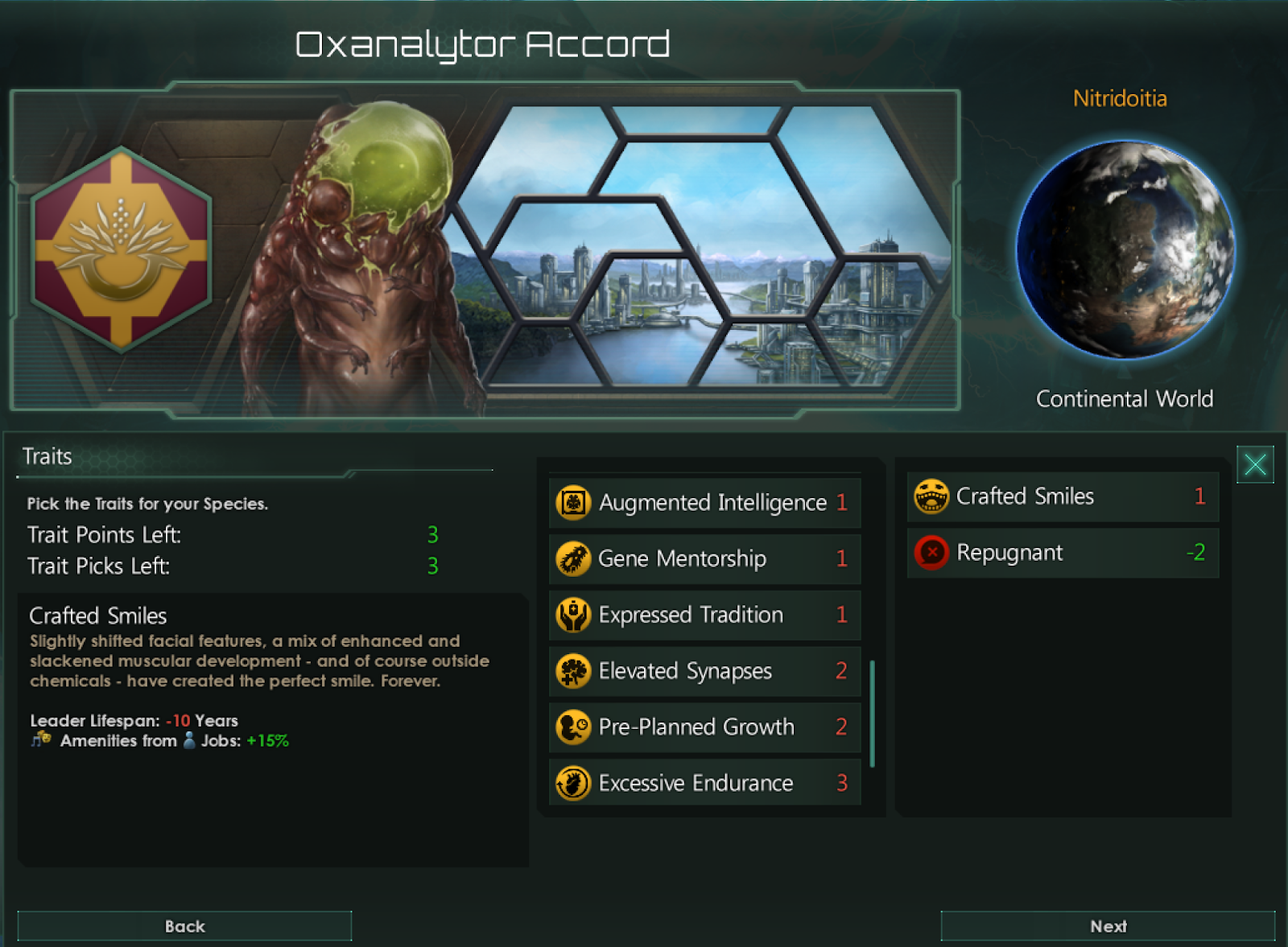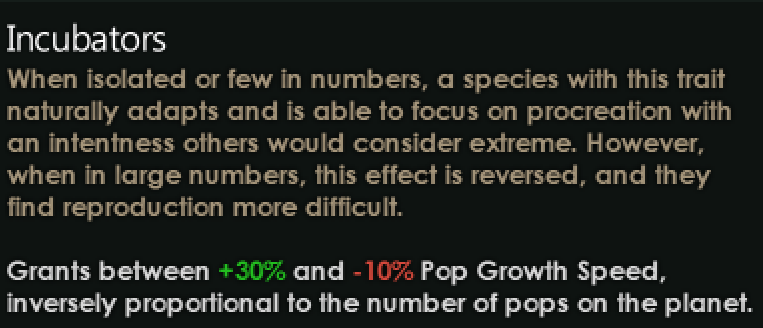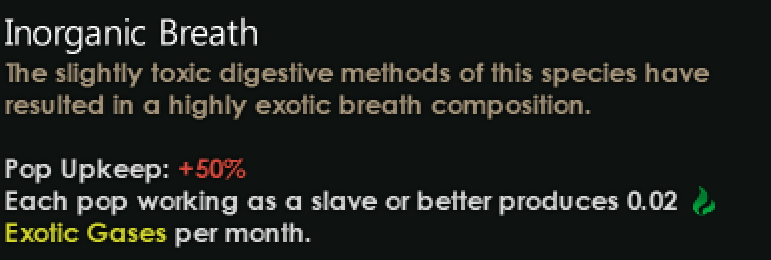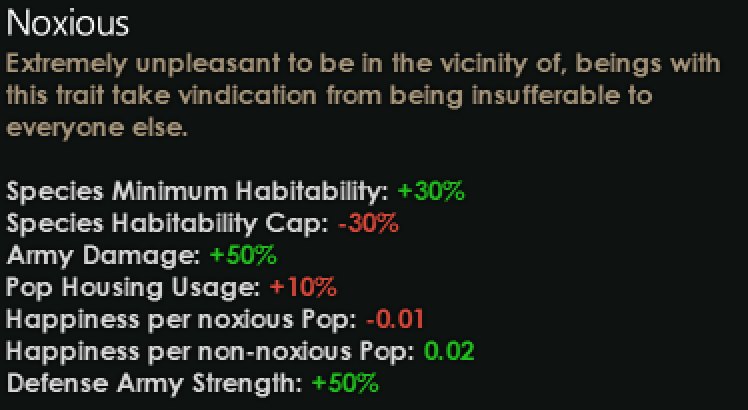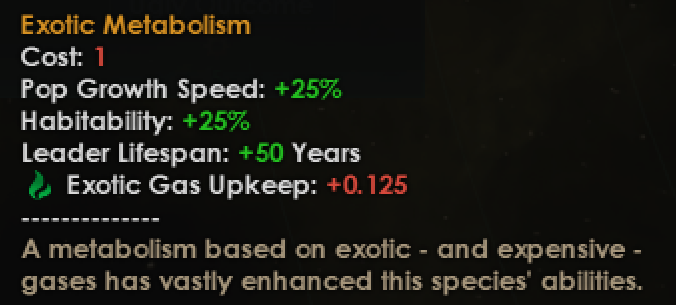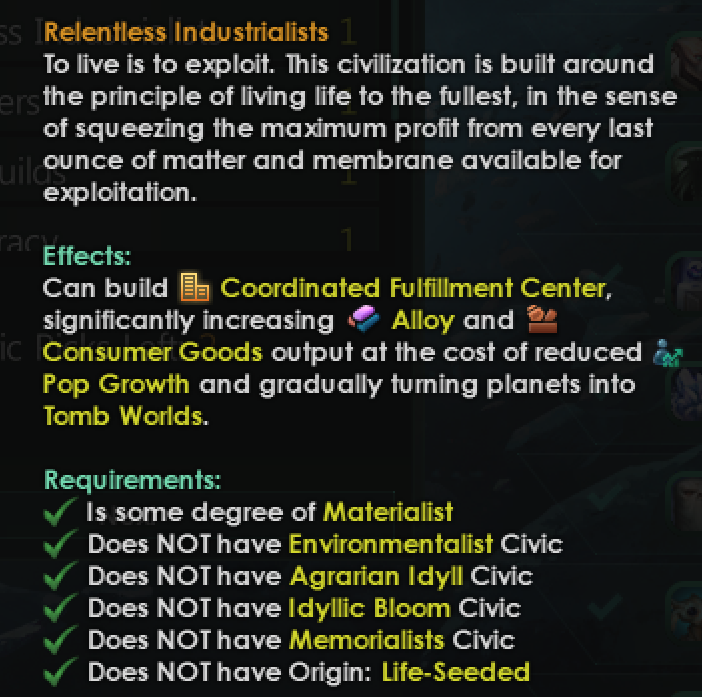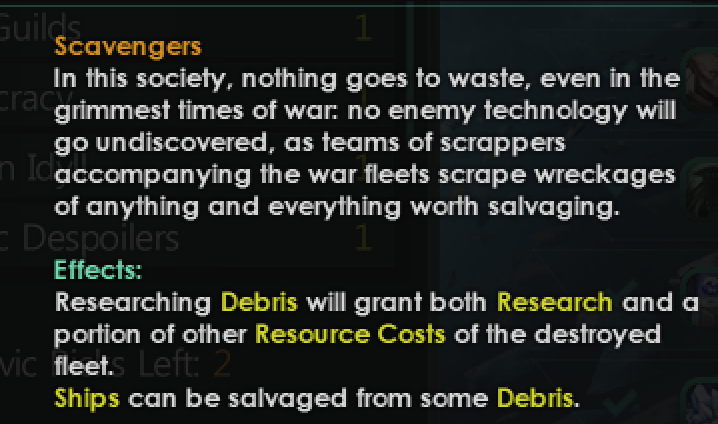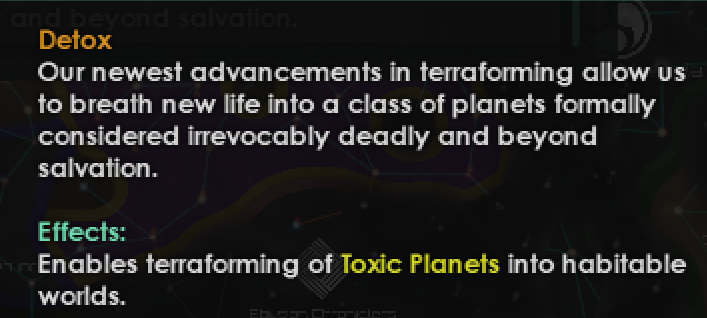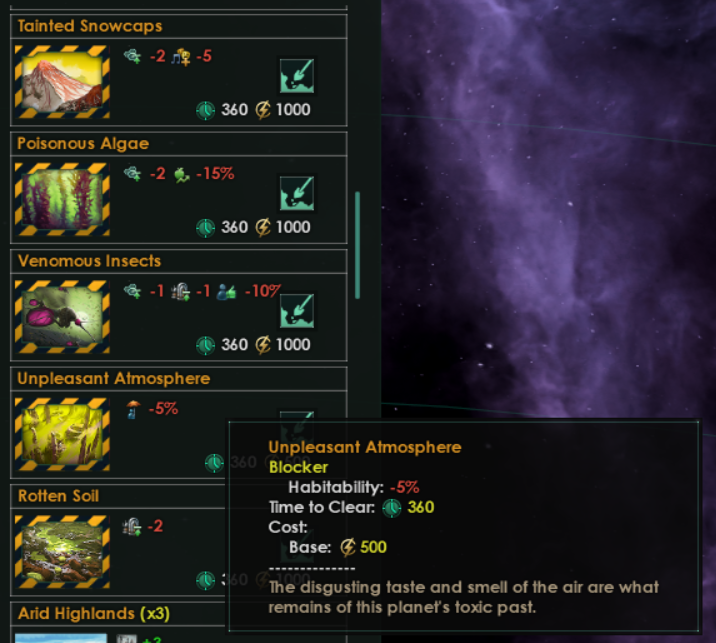
Stellaris - MrFreake_PDX

written by Alfray_Stryke
WARNING: This is a long dev diary, grab a coffee and enjoy!
Hello, it’s Alfray Stryke again! Some folks might recall that back in DD#257 that we went over some of our plans for summer experiments. In particular, I planned to look at what could be done with tradition trees and gating them behind various requirements.
Traditions
With the flexibility in how empires can choose traditions that we introduced in 3.1 "Lem", Alfray Stryke is planning some experiments looking at introducing new tradition trees.
These are looking at how gating tradition trees behind various triggers might influence the game. There have been some ideas suggested about introducing tradition trees that are locked behind ascension perks or origins, and we're interested to see where these may lead.
Now what wasn’t mentioned is that I’ve been wanting to rework how the Ascension Paths from Utopia have worked for quite some time, with the original design framework written during Summer 2021, and this seemed like a good opportunity.
For those of you who attended PDXCON, Eladrin and I gave a presentation previewing our summer experiments which some members of our community were kind enough to share.
It turned out that these experiments proved successful internally and we’ll be moving to test them in the 3.6 “Orion” Open Beta. As a note, due to the length of this dev diary, I’ll be splitting sections into spoiler tags to make it slightly easier to read. Note that the numbers and effects of these changes may still change depending on testing results.
I’ll start by summarizing the current state of the Ascension Paths in 3.5:
Ascension Paths Summary (Live)
[expand type=details]
Psionics
- Only available to regular empires.
- Requires Utopia
- Two routes:
- Mind over Matter AP followed by the Transcendence AP.
- Teachers of the Shroud origin followed by the Transcendence AP.
Genetics
- Available to regular empires and hive-minds.
- Requires Utopia
- Engineered Evolution AP and Evolutionary Mastery AP.
- Only available to regular empires.
- Requires Utopia
- Flesh is Weak AP and Synthetic Evolution AP.
- Only available to machine intelligences.
- Requires Synthetic Dawn
Synthetic Age AP.
- This isn’t really an ascension path, but I’m including it for completion’s sake.
So we (sort of) have between three to five ascension paths depending on how you look at things (mostly if you consider being cyborgs to be on the route to becoming synthetic or a separate thing). These have now been reworked so instead of an Ascension Path having a structure of two Ascension Perks which require various technologies or special projects, they each have an Ascension Perk which gives a guaranteed research option upon selection and grants access to the Ascension Path in the form of a tradition tree. Thus, under the rework we have the following:
Ascension Paths Rework Summary
[expand type=details]
Psionic Ascension
- Only available to regular empires.
- Requires Utopia
- Mind over Matter AP OR Teachers of the Shroud origin.
- Psionic Traditions.
- Available to regular empires and hive-minds.
- Requires Utopia
- Engineered Evolution AP
- Genetic Traditions
- Available to regular empires, hive-minds and driven assimilators.
- Requires Utopia
- The Flesh is Weak AP (regular empires) OR Organo-Machine Interfacing AP (hive-minds) OR assimilate 30 pops (driven assimilators).
- Cybernetic Traditions
- Available to regular empires and machine intelligences.
- Requires Utopia for regular empires
- Requires Synthetic Dawn for machine intelligences
- Synthetic Evolution AP OR Synthetic Age AP.
- Synthetic Traditions
Each of these tradition trees has incorporated all of the benefits of the previous Ascension Paths, with some new goodies added for those that we felt needed them. Due to how traditions within the trees are unlocked we’ve found that this leads to a more gradual route through the paths instead of saving up Ascension Perk slots and then taking an entire path while the game is paused!
As expected, all values and art shown here are not final, things can and most likely will shift about during testing.
Psionic Ascension Path
With all that preamble out of the way, let’s dive into the Psionic Ascension Path.

And thus by the commutative property of multiplication, Mind over Energy
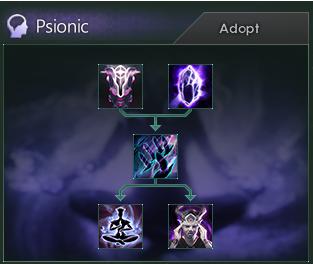
We shall unlock the power within the [Root.GetSpeciesAdj] mind.
Psionic Ascension Flow Chart
[expand type=details]
[expan="Psionic Ascension Flow Chart"]
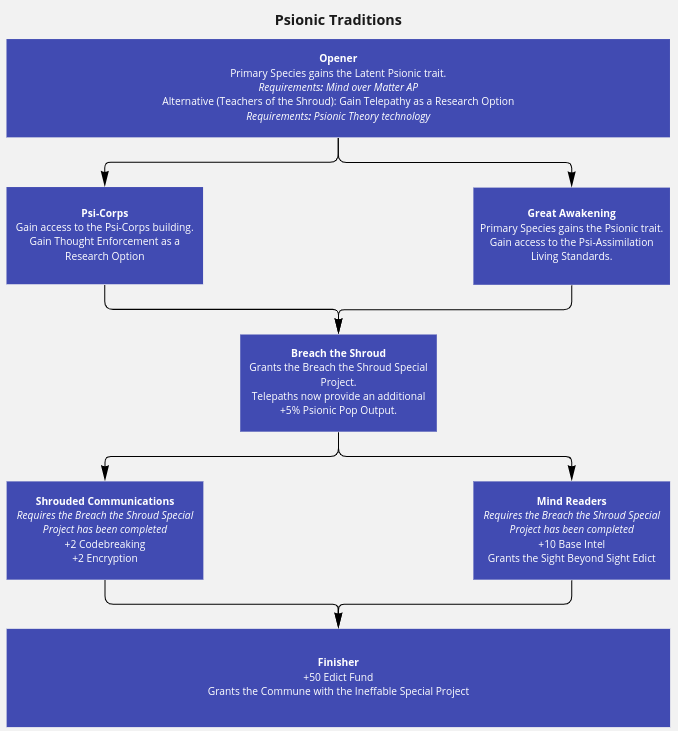
Flow charts, now in purple
[/expand]
To access this tradition tree we either need to take the Mind Over Matter AP or have the Teachers of the Shroud origin (from Overlord) and have researched Psionic Theory.
What’s remained from the previous version?
- Mind over Matter still grants Telepathy as a Research Option, requires Psionic Theory and can’t be taken as your first Ascension Perk.
- For Teachers of the Shroud empires, the path is still partially unlocked at the start of the game and to progress requires the Psionic Theory technology.
What’s changed?
- Mind over Matter has had the bulk of its boons either moved to the opener (the Latent Psionic trait) or the Psi-Corps tradition.
- Transcendence has had its boons shared between the three remaining traditions.
- The +5%/+10% Energy from jobs provided by the Latent Psionic and Psionic traits have been replaced with +5%/+10% Unity from jobs as this was more in-line with the desired focus for Psionic and particularly Spiritualist empires.
- Telepaths previously provided a planet-wide +5% Resources from Pops modifier, this has been replaced with a +5% Resources from Psionic Pops so that non-Psionic pops in your empire no longer have their performance improved by the presence of Telepaths. However, this modifier increases to +10% when the Breach the Shroud tradition is taken, meaning that the two Telepath jobs from a Psi-Corp building will provide +20% to the resource output of the planet if all pops working are Psionic. So although a Psionic empire may have fewer pops than the other Ascension Paths, those pops should be more efficient.
What’s new?
- Thought Enforcement is now a guaranteed research option, with the Psi-Corp tradition.
- The Mind Readers tradition grants a new empire edict, Sight Beyond Sight. This provides some rather nice bonuses as your navy’s navigators are supplied with an abundance of Zro.:
- +1 Sensor range
- -15% Hyper Drive Charge Time
- -15% Hyper Drive Cooldown
- -15% Jump Drive Cooldown
- +15% Quantum Catapult Accuracy.
- The finisher for the tradition tree grants 50 edict fund and more importantly a Special Project that when completed will allow you to form a Covenant with a random Shroud Entity.
Genetic Ascension Path
In comparison, the Genetic Tradition tree is slightly simpler as the traditions themselves aren’t locked behind special projects. This is because to get the most use out of it, you’ll likely be doing a fair few special projects to modify species.

Sometimes a guiding hand is needed
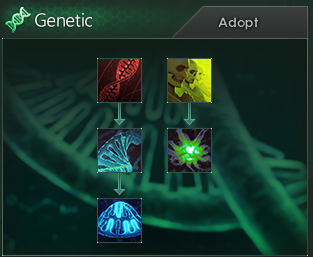
What if we could obtain genetic perfection?
Genetic Ascension Flow Chart
[expand type=details]
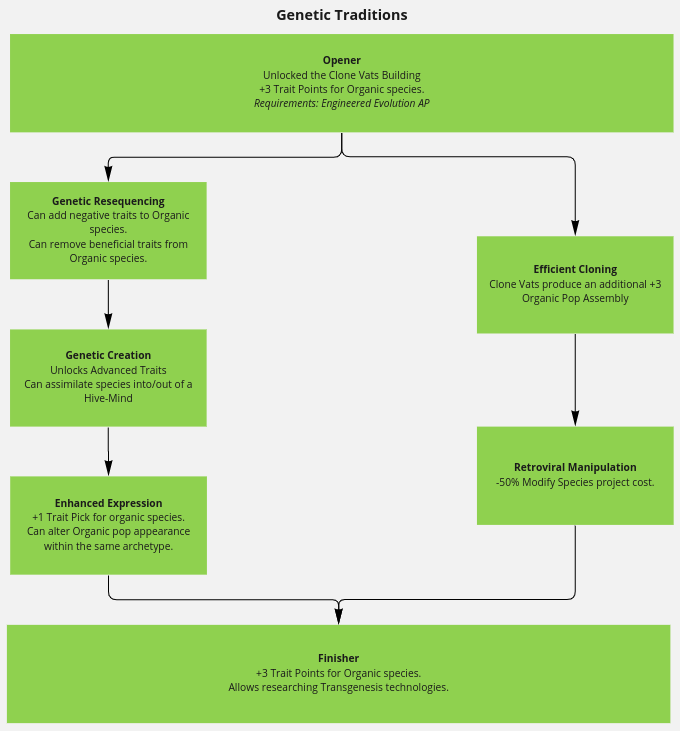
Reprogram your genetic code
[/expand]
What’s changed?
The boons from Engineered Evolution and Evolutionary Mastery have been arranged to follow a logical progression through the tradition tree, with you gradually unlocking more and more advanced species modifications.
What’s new?
- Efficient Cloning doubles the output of Clone Vats without increasing their upkeep, which should make them somewhat more competitive with empires that favour a more metallic path.
- Enhanced Expression allows you to add another trait pick on your modified species, meaning you can cram more traits onto a species.
- Completing Genetic traditions allows you to research special Transgenesis technologies. These technologies allow you to add Lithoid traits to non-Lithoids, Plantoid traits to non-Plantoids/Fungoids, and if you’ve harvested the DNA from certain Leviathans, you can splice some rather special traits into your species’ genetic code. The Leviathan traits available are:
- Drake-Scaled (Ether Drake, Shard, Sky Dragon)
- This trait requires that the player has harvested the genetic material from a space dragon (Ether Drake, Shard, or Sky Dragon). This is presented as an event option when the leviathan is slain.
- Cost: 3
- Each pop produces 0.025 monthly Alloys.
- +50% Army Health
- Mutually exclusive with other resource generating traits.
- Voidling (Voidspawn)
- Cost: 3
- This trait requires that the player has harvested the genetic material from the Voidspawn. This is presented as an event option when the leviathan is slain.
- Replaces all Food or Mineral upkeep with Energy Upkeep.
- Habitability Floor on all planets of 50%.
- Mutually exclusive with Phototrophic, Radiotrophic traits.
- Polymelic (Tiyanki Matriarch)
- Cost: 3
- This trait requires that the player has harvested the genetic material from the Tiyanki Matriarch. This is presented as an event option when the leviathan is slain.
- As budding but 0.05 assembly per pop.
- We’ve also added a few new Advanced traits that are unlocked by Genetic Creation to cover some missing bases.
- Vat-Grown
- Cost: 3
- -25% Pop Growth Speed
- +25% Pop Assembly Speed
- -10% Housing Usage
- Felsic
- Requires Lithoid
- Cost: 2
- Minerals from Livestock and Processing: +2
- Natural Machinist
- Cost: 2
- +10% Alloys from Jobs
- +10% Consumer Goods from Jobs
Cybernetic and Synthetic Ascension
Now onto Cybernetic and Synthetic Ascension. To start with, we’ve split the Synthetic path into the two paths because it felt like a better fit to be able to wholly devote your empire into embracing cybernetics without going down the mind-uploading route.
Cybernetic ascension is no longer unlocked via the robotics line of technologies, instead there are new technologies to represent basic cybernetic upgrades that your population has access to. This comes with a change to the Powered Exo-Skeletons technology as well.
Powered Exo-Skeletons Technologies/Improved Servomotors
Tier 1, Engineering - Industry
+5% Army Damage
+5% Worker/Menial Drone Output
Integrated Cybernetics/Adaptive Cybernetics
Requires: Powered Exo-Skeletons Technologies/Improved Servomotors
Tier 2, Engineering - Industry
+5% Habitability
Neuro-Quantum Links
Requires: Integrated Cybernetics Technologies
Tier 3, Physics - Computing
+5% Specialist/Complex Drone Output
This technology is not available to driven assimilators
Since Cybernetic ascension is now available to Hive-Minds and Driven Assimilators, they too get access to The Flesh is Weak, albeit with a changed name and description.
The Flesh is Weak/Organo-Machine Interfacing Ascension Perk
Available to regular empires, hive-minds and driven assimilators
- Regular Empires and Hive-Minds:
- Requires Integrated Cybernetics Technology
- Driven Assimilators:
- Requires: Have assimilated 30 pops.
- Regular Empires and Hive-Minds:
- Gain Neuro-Quantum Links research option
- Driven Assimilators:
- Gain Adaptive Cybernetics research option
- Allows taking Cybernetic Traditions.
Because Cybernetic traditions are available to multiple empire types, there’s a number of tradition swaps used here to ensure they each get something different.

But the machine is strong
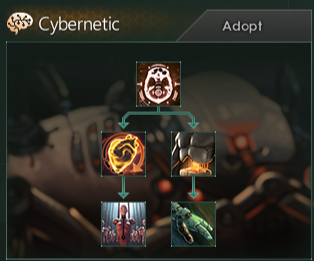
Our future lies in the fusion of flesh and machine.
Cybernetic Ascension Flow Chart
[expand type=details]
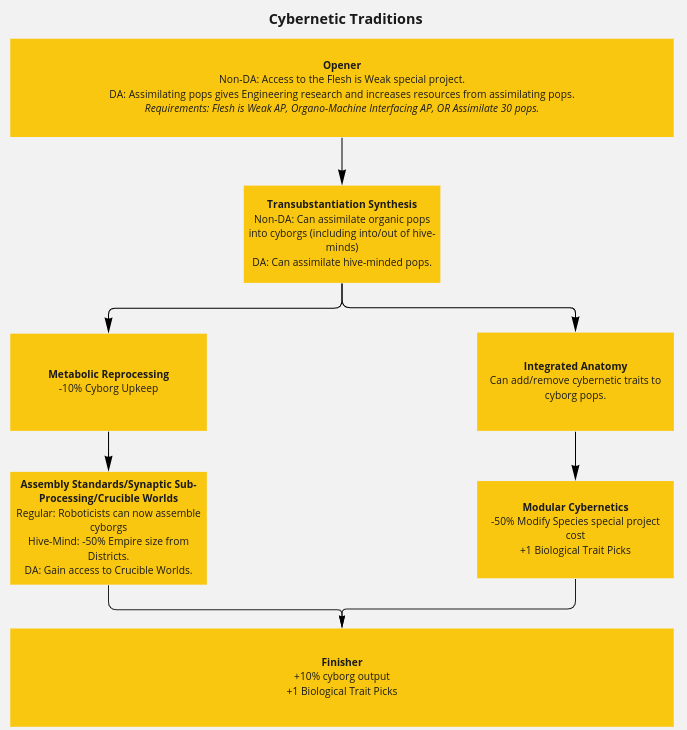
So many tradition swaps!
[/expand]
Regular Cybernetic Traditions
[expand type=details]
Opener
Gain access to The Flesh is Weak Special Project
- Tradition 1: Transubstantiation Synthesis
- Requires that The Flesh is Weak Special Project has been completed.
- Can assimilate organic species to Cyborgs (Including into/out of Hive-Minds).
- Tradition 1: Organ Harvesting (Swap for Fanatic Purifiers)
- Requires that The Flesh is Weak Special Project has been completed.
- Planets with ongoing purges gain +10% pop growth speed.
- Tradition 2: Metabolic Reprocessing
- -10% Cyborg Upkeep
- Tradition 3: Integrated Anatomy
- Allows add/remove cyborg traits (based off of robot traits) to cyborgs
- Tradition 4: Assembly Standards
- Unlocks Assembly Standards policy, allowing roboticists to assemble cyborgs instead of robots.
- Tradition 5: Modular Cybernetics
- -50% Modify Species special project cost
- +1 Biological Trait Picks
+10% cyborg output
+1 Biological Trait Picks
[/expand]
Hive-Mind Cybernetic Traditions
[expand type=details]
Opener
Gain access to The Flesh is Weak Special Project
- Tradition 1: Transubstantiation Synthesis
- Requires that The Flesh is Weak Special Project has been completed.
- Can assimilate organic species to Cyborgs (Including into/out of Hive-Minds).
- Tradition 1: Organ Harvesting (Swap for Devouring Swarms/Terravores)
- Requires that The Flesh is Weak Special Project has been completed.
- Planets with ongoing purges gain +10% pop growth speed.
- Tradition 2: Metabolic Reprocessing
- -10% Cyborg Upkeep
- -10% Empire Size from Cyborgs
- Tradition 3: Integrated Anatomy
- Allows add/remove cyborg traits (based off of robot traits) to cyborgs
- Tradition 4: Synaptic Sub-Processing
- -50% empire size from districts.
- Tradition 5: Modular Cybernetics
- -50% Modify Species special project cost
- +1 Biological Trait Picks
+10% cyborg output
+1 Biological Trait Picks
[/expand]
Driven Assimilator Cybernetic Traditions
[expand type=details]
Opener
Assimilating Organic Pops now provides Engineering Research,
All resources provided from Assimilation are increased..
- Tradition 1: Inevitable Assimilation
- Can now assimilate Hive-Minded pops.
- +1 Pop assimilated (per planet, per year).
- Tradition 2: Metabolic Reprocessing
- -10% Cyborg Upkeep
- -10% Empire Size from Cyborgs
- Tradition 3: Integrated Anatomy
- Allows add/remove cyborg traits (based off of robot traits) to cyborgs
- Tradition 4: Crucible Worlds
- Gain access to the special Crucible World planetary designation.
- Crucible Worlds have greatly increased pop growth, provided by Crucible Drones, but have penalties to pop upkeep and output and have restrictions on certain buildings.
- Tradition 5: Modular Cybernetics
- -50% Modify Species special project cost
- +1 Biological Trait Picks
+10% cyborg output
+1 Biological Trait Picks
[/expand]
To expand upon Cybernetic Ascension, we have added Cybernetic Traits that are only available to Cybernetic pops, after taking the Integrated Anatomy tradition. These traits make use of normal biological trait point and pick limits, but are not blocked by any biological traits. The traits available to cyborgs are based off of the traits available to robotic species, however they are slightly cheaper in terms of trait points while giving the pops a small amount of energy upkeep. These traits are as follows:
Cybernetic Traits
[expand type=details]
Positive traits
These all increase pop upkeep by 0.5 energy/month.
- Power Drills, Cost 1, +15% minerals from jobs
- Harvesters, Cost 1, +15% food from jobs
- Superconductive, Cost 1, +15% energy from jobs
- Efficient Processors, Cost 2, +5% resources from jobs
- Logic Engines, Cost 1, +10% research from jobs
- Loyalty Circuits, Cost 1, +10% happiness
- Double-Jointed, Cost 1, -10% pop housing usage, +15% pop growth from immigration, -25% resettlement cost
- Enhanced Memory, Cost 1, +2 leader level cap,
- Durable, Cost 1, pop amenities usage -0.5
- Learning Algorithms, Cost 1, +25% leader experience, +1 leader level cap
- Streamlined Protocols, Cost 1, -10% empire size from pops
- Trading Algorithms, Cost 1, +25% trade value from jobs.
Negative traits
- Bulky, Cost -2, +10% pop housing usage, -15% pop growth from immigration, +25% resettlement cost
- High Maintenance, Cost -2, pop amenities usage +0.5
- Power Intensive, Cost -1, increases pop upkeep by 1 energy/month.
- Neural Limiters, Cost -2, -25% leader experience, -1 leader level cap
- High Bandwidth, Cost -2, +10% empire size from pops
Additionally, the Trading Algorithms trait is available to both robots and cyborgs.
Onto the path of the machine…
The first thing with this that I want to address is comparing the Synthetic Age AP with the options available to regular empires was rather damning. Only +2 trait points and -33% species modification cost left a lot to be desired for any machine intelligence. Thus one of the first things I wanted to do with this was make the Synthetic path available to machine intelligences. The APs required to access this tradition tree are
Synthetic Evolution Ascension Perk
Available to regular empires
- Requires: Droids Technology
- Gain Synthetics as a research option
- Allows taking Synthetic Traditions.
Synthetic Age Ascension Perk
Available to machine intelligences
- Requires: Machine Template System Technology
- Gain Binary Motivators as a research option
- Allows taking Synthetic Traditions.

We're all just cogs in the machine
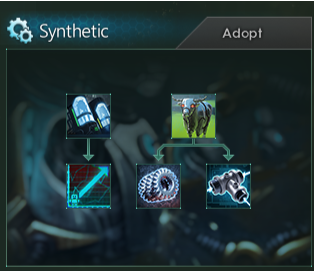
It is the dawn of a Synthetic Age.
Synthetic Ascension Flow Chart
[expand type=details]
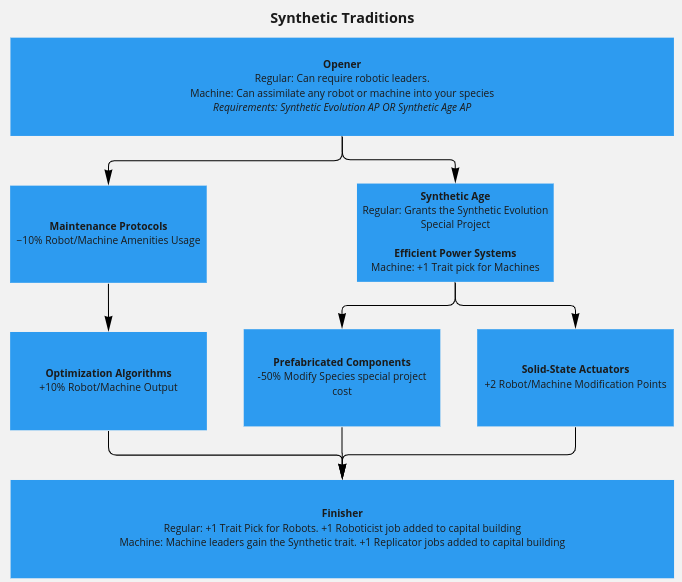
A synthetic dawn approaches
[/expand]
Regular Synthetic Traditions
[expand type=details]
Opener
Allows recruitment of robotic leaders
- Tradition 1: Maintenance Protocols
- −10% Robot Amenities Usage
- Tradition 2: Optimization Algorithms
- +10% Robot Output
- Tradition 3: Synthetic Age
- Requires the Synthetics technology to be researched
- For Non-Purifiers:
- Grants the Synthetic Evolution Special Project
- Can assimilate organic, robotic and machine species to Synths (after completing the special project).
- For Fanatic Purifiers:
- +10% Robot Assembly Speed
- Tradition 4: Prefabricated Components
- -50% Modify Species special project cost
- Tradition 5: Solid-State Actuators
- +2 Robot Modification Points
+1 Trait Pick for Robots.
+1 Roboticist job added to capital building
[/expand]
Machine Synthetic Traditions
[expand type=details]
Opener
Can assimilate robot and machine species into your primary machine species.
- Tradition 1: Maintenance Protocols
- −10% Machine Amenities Usage
- Tradition 2: Optimization Algorithms
- +10% Machine Output
- Tradition 3: Efficient Power Systems
- +1 Trait pick for Machines
- Tradition 4: Prefabricated Components
- -50% Modify Species special project cost
- Tradition 5: Solid-State Actuators
- +2 Machine Modification Points
Finisher:
Machine leaders gain the Synthetic trait.
+1 Replicator jobs added to capital building
[/expand]
Some of the changes we’ve made here could be considered fairly spicy as we’ve reduced the sheer amount of robot assembly that you could gain by no longer scaling the number of roboticists by the tier of the capital building. Though, of the changes we’ve made, the ability to convert all species (including other empires’ robots) into your synths is one of my favorites.
Another change we made alongside this rework was that the Mechanists origin has lost their -5% robot upkeep modifier in exchange for +15% robot build speed, +1 robot trait pick and having the Machine Template System technology available as a research option from the start of the game.
That's it for this week! Be sure to join us Monday, October 10th, on http://twitch.tv/paradoxinteractive at 3 PM CEST (UTC + 2) where Game Director Eladrin will be showing off the Combat Rebalance live on Stream!
